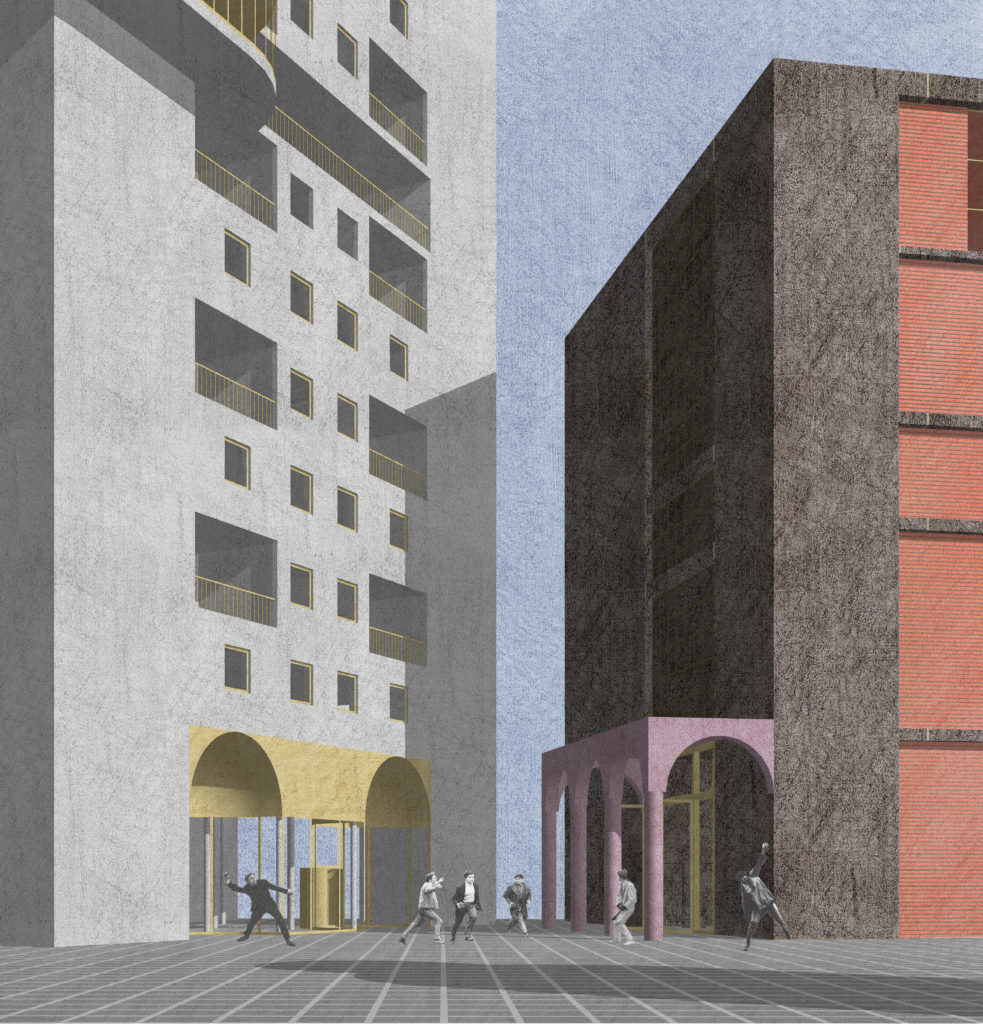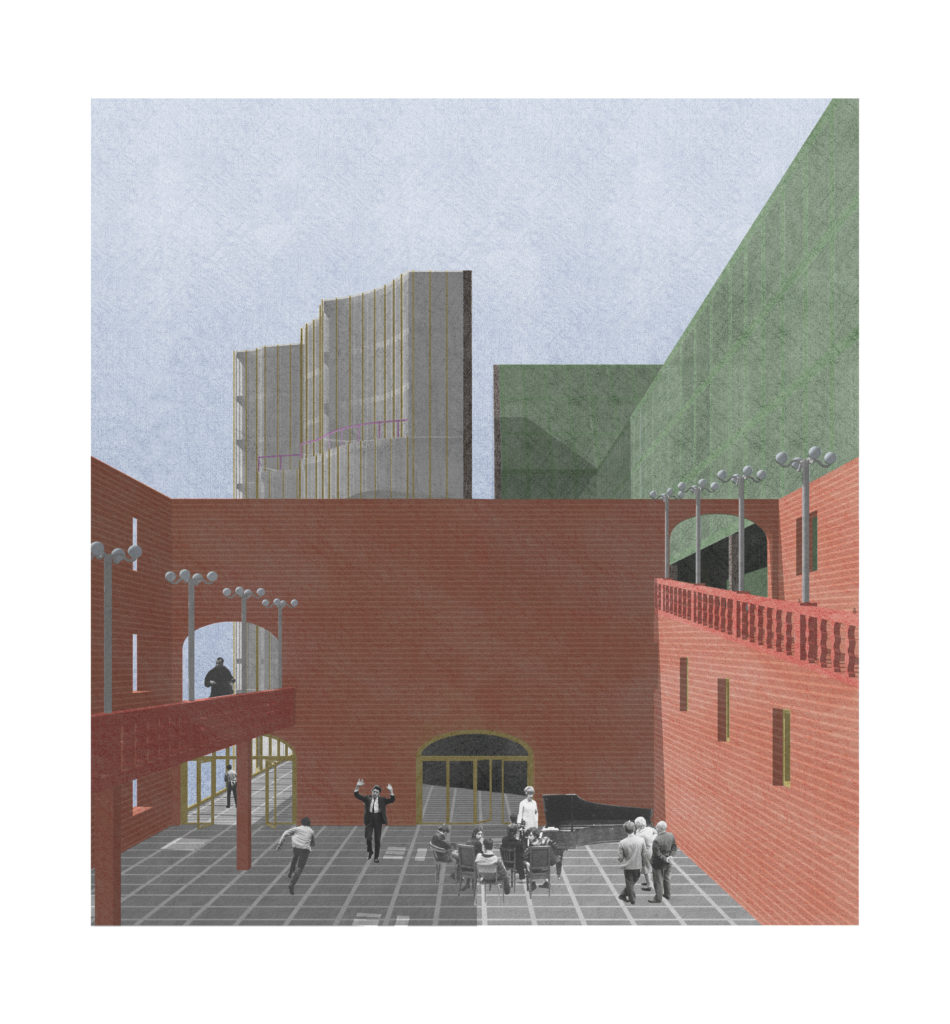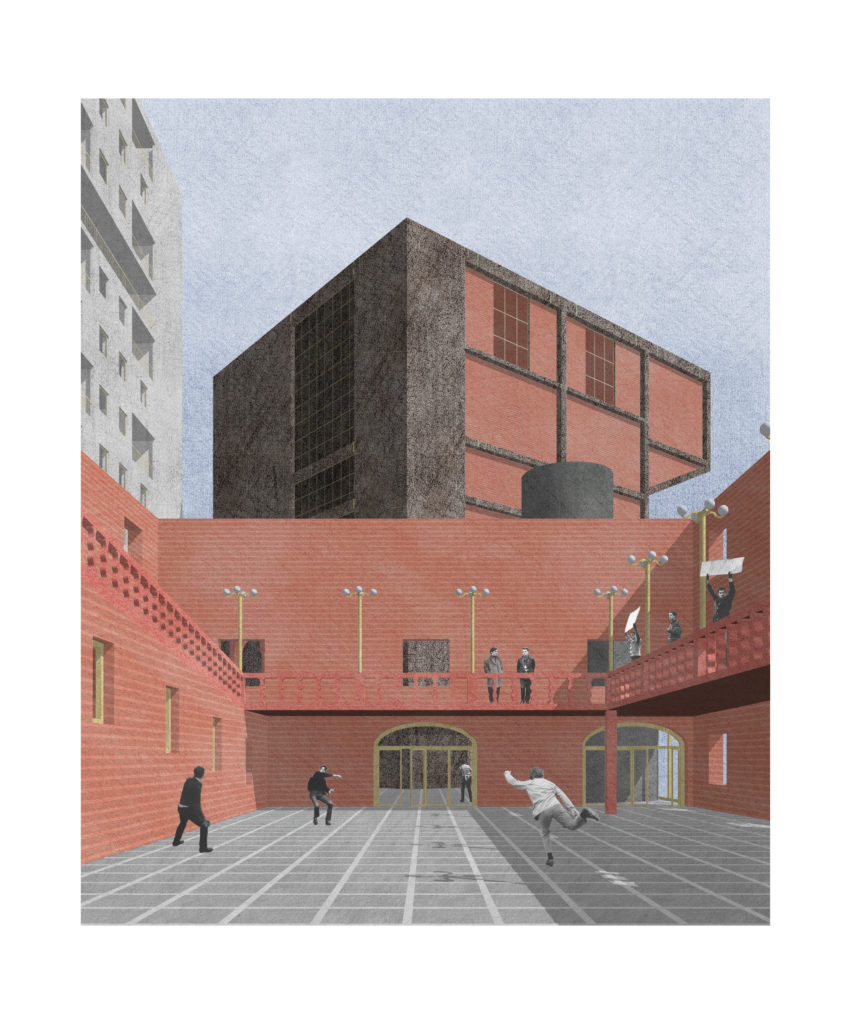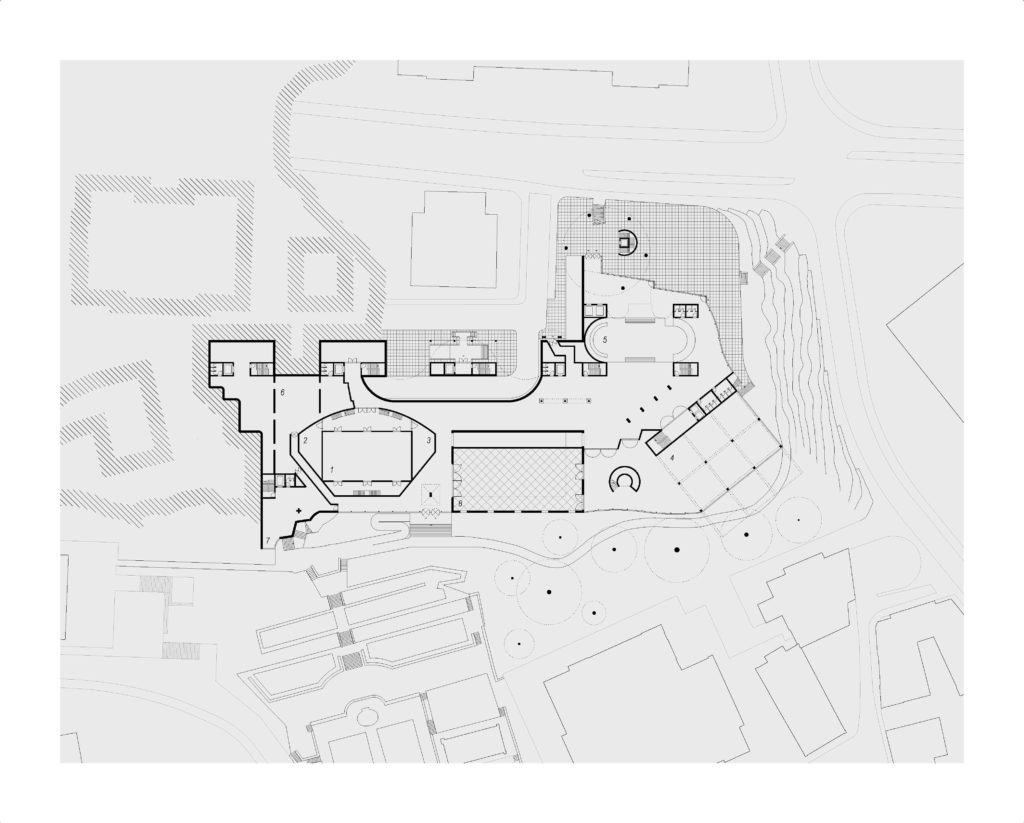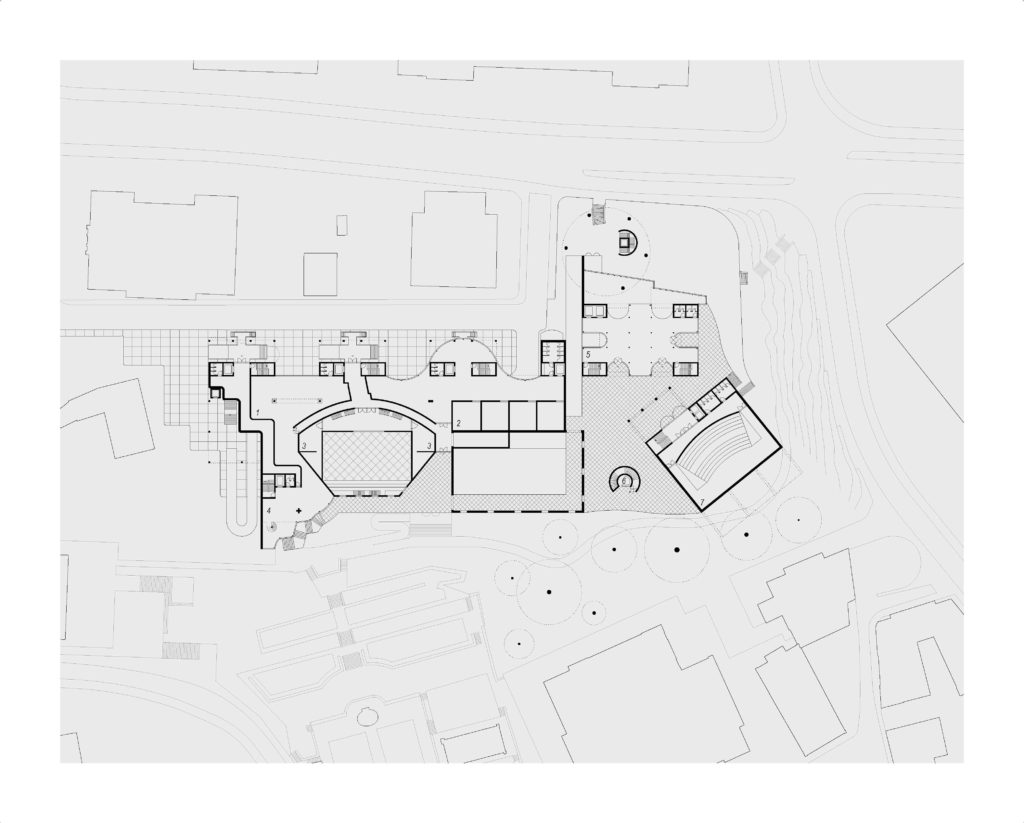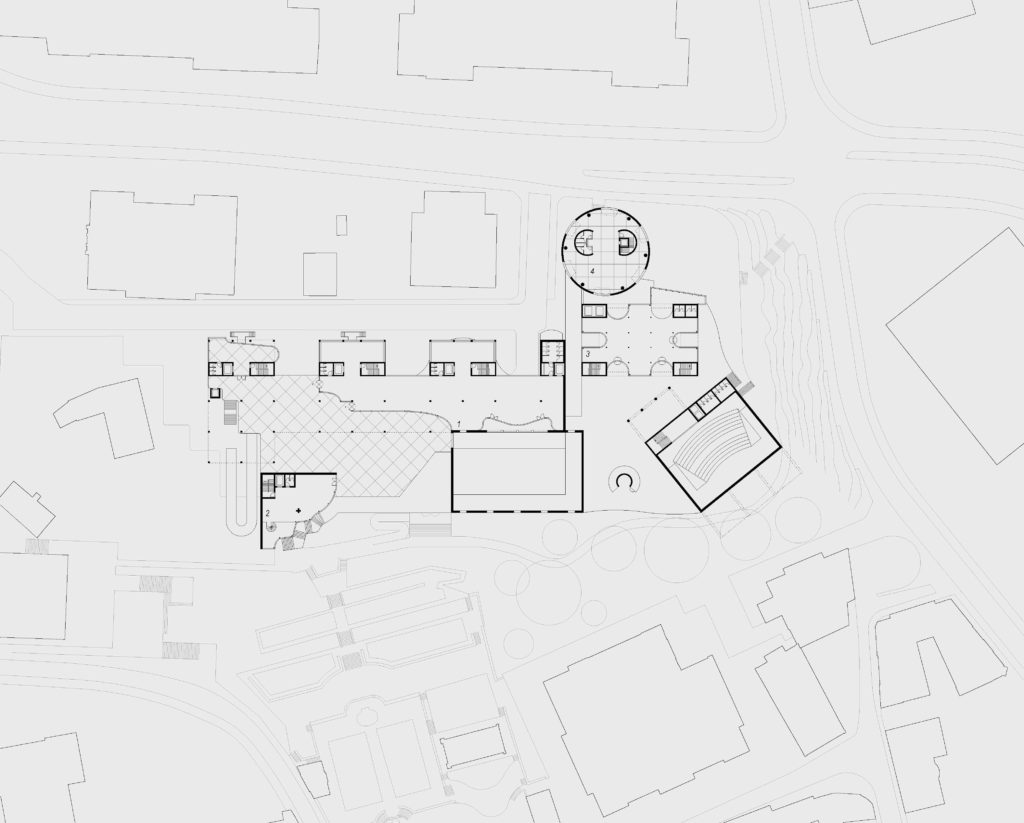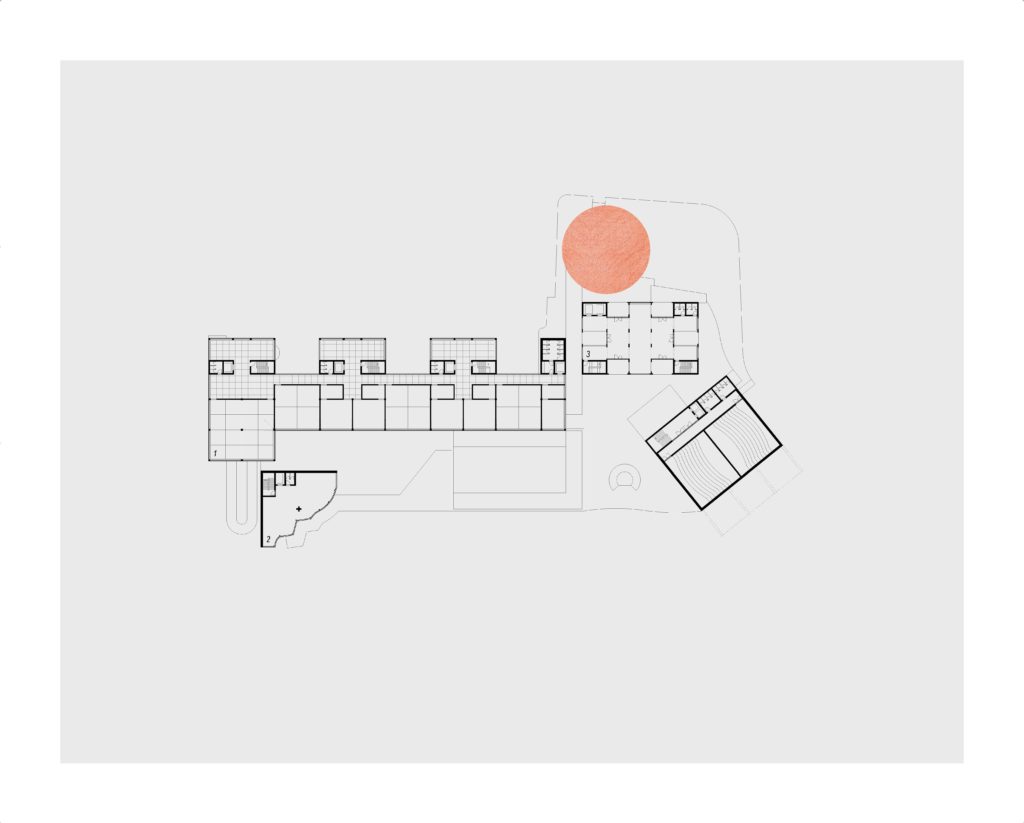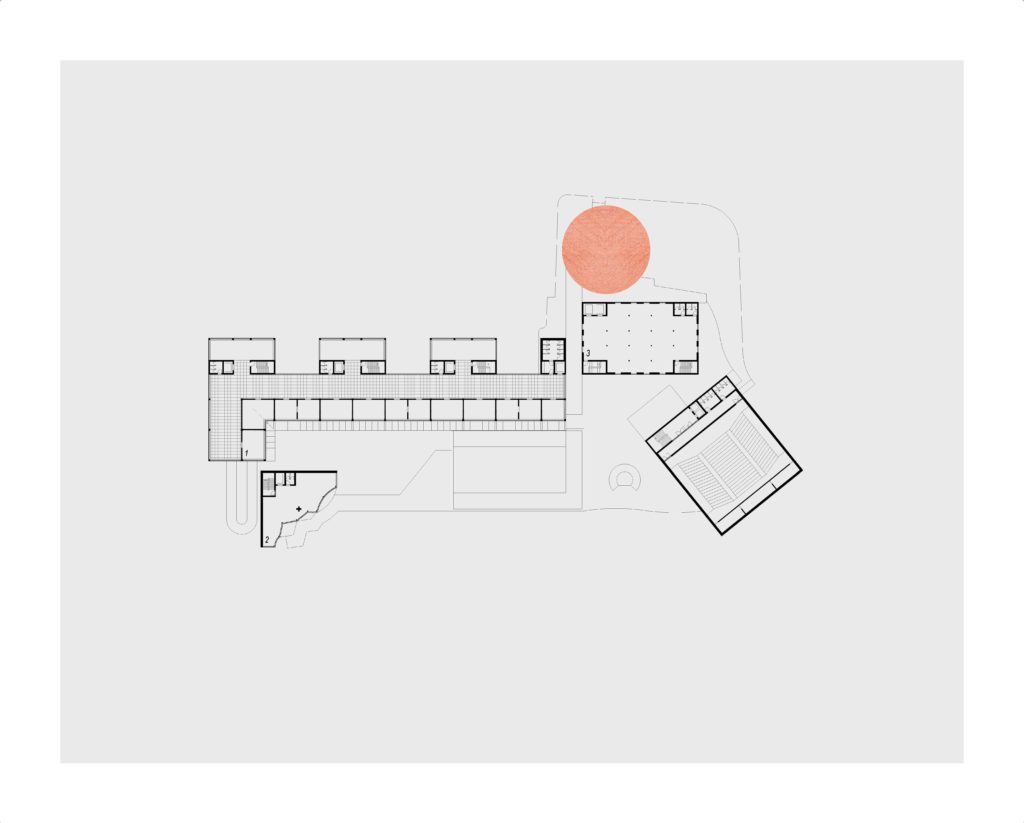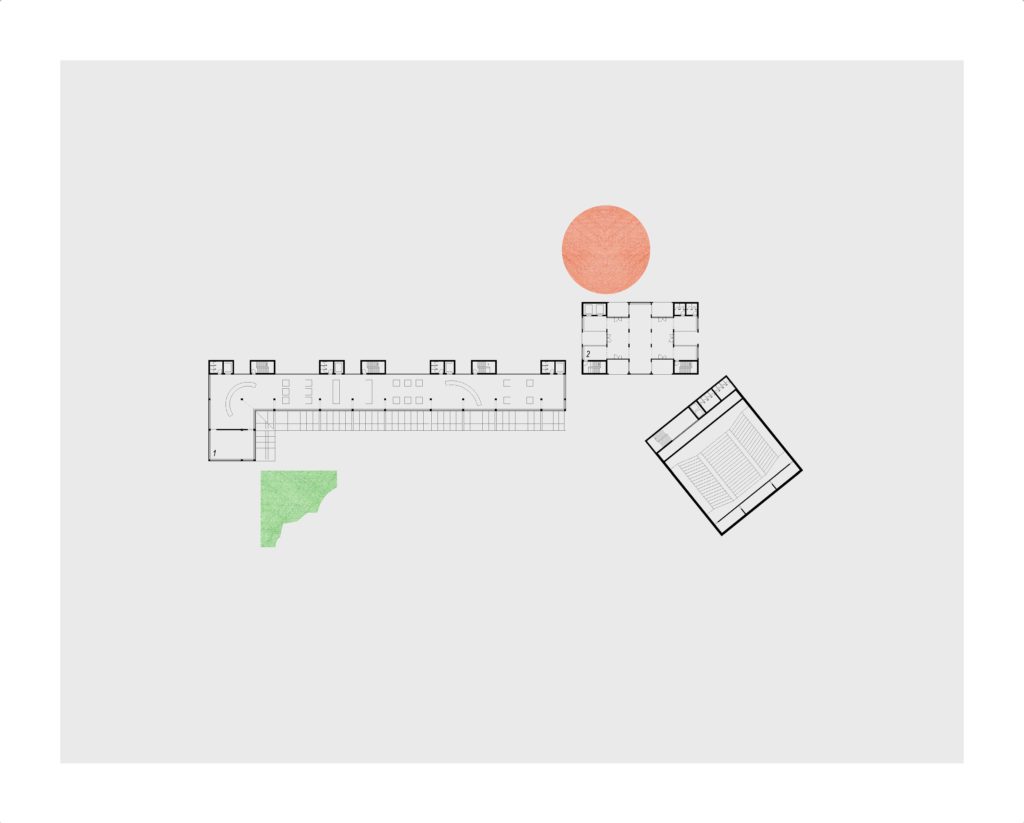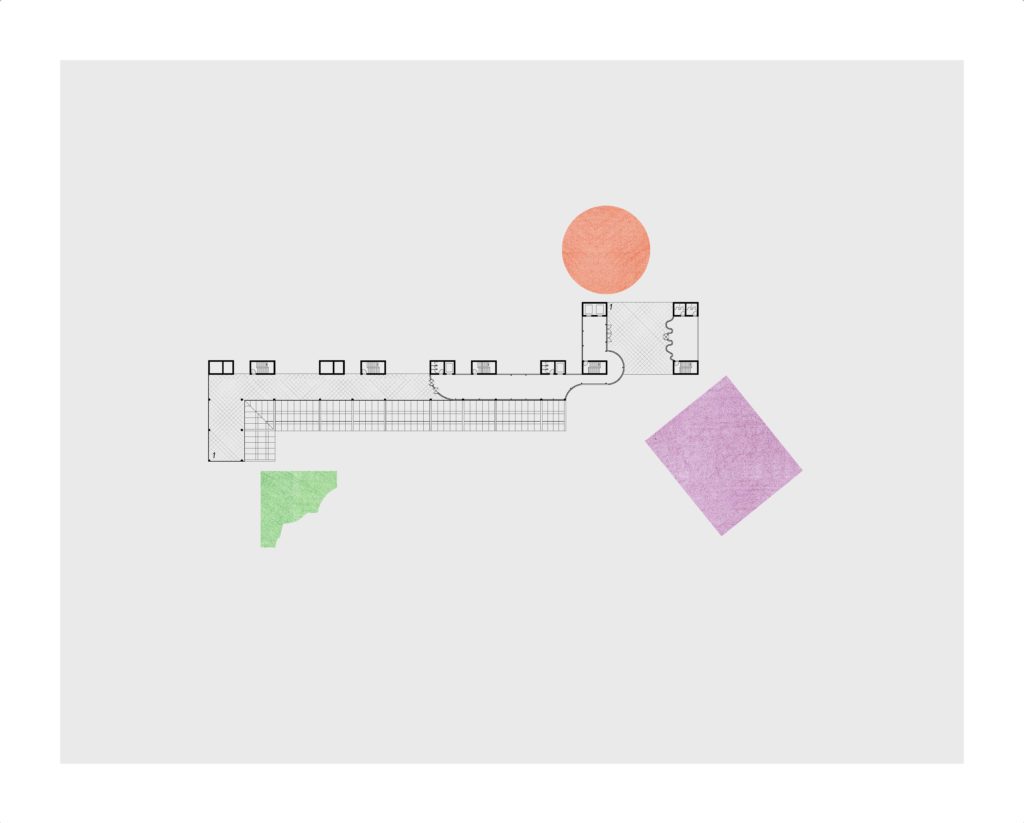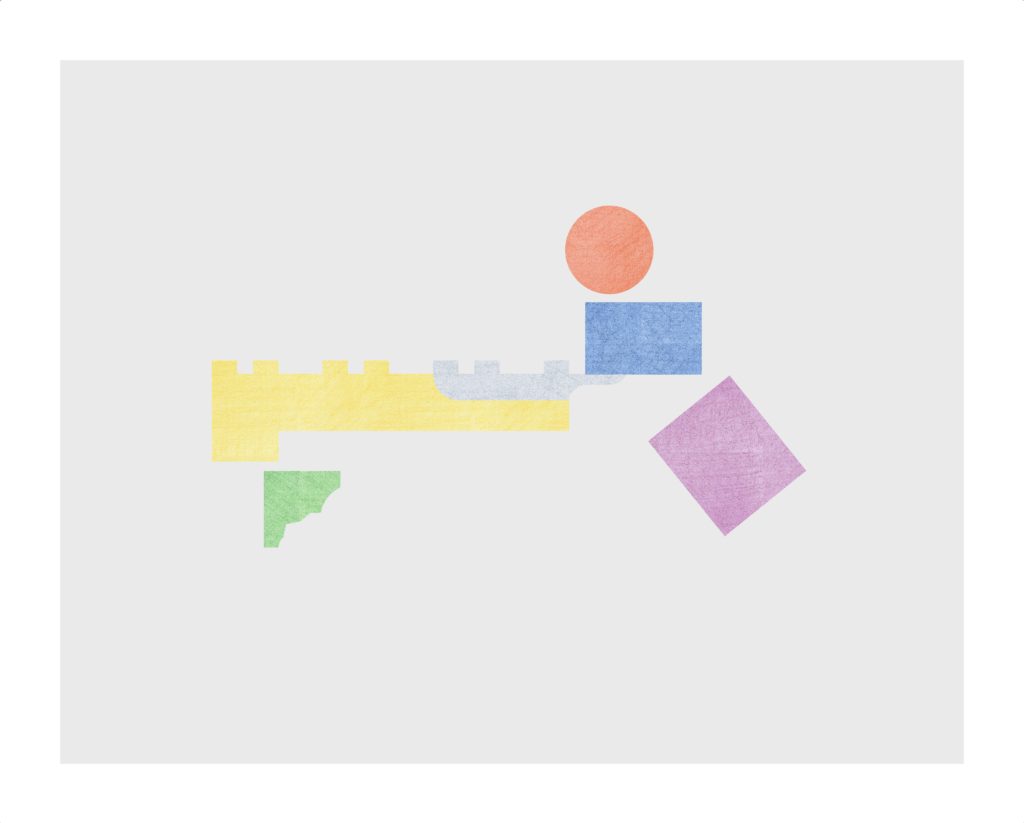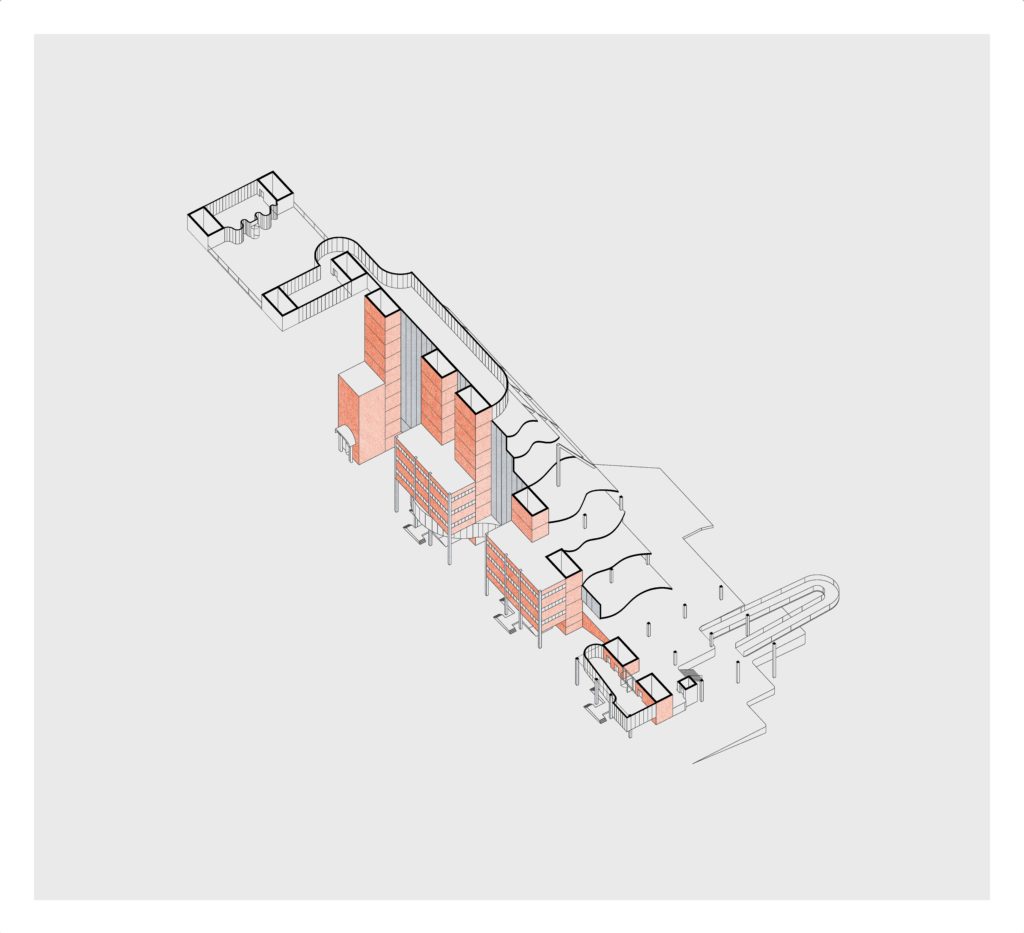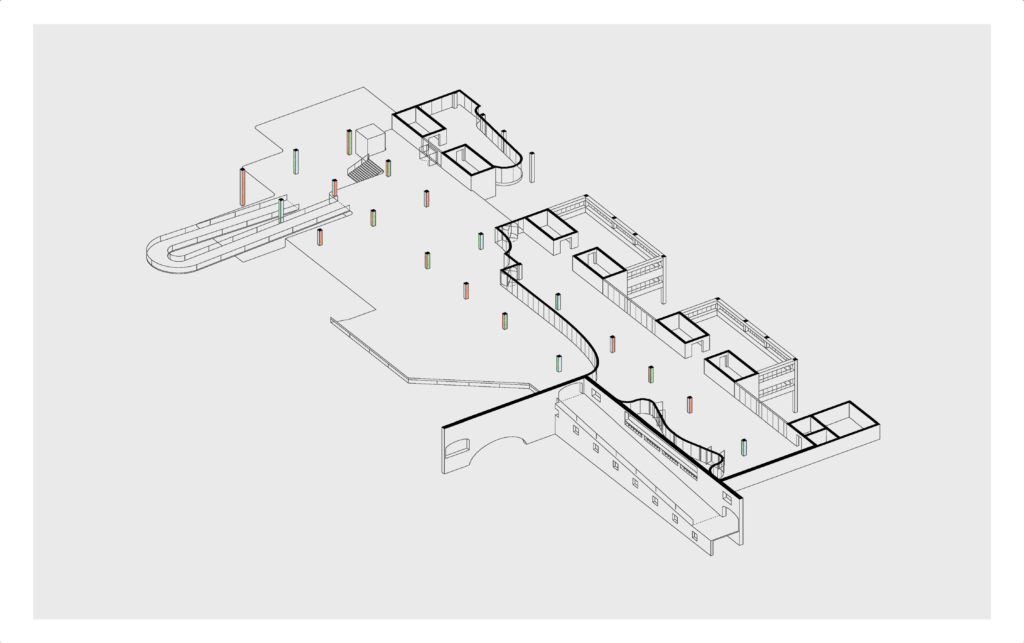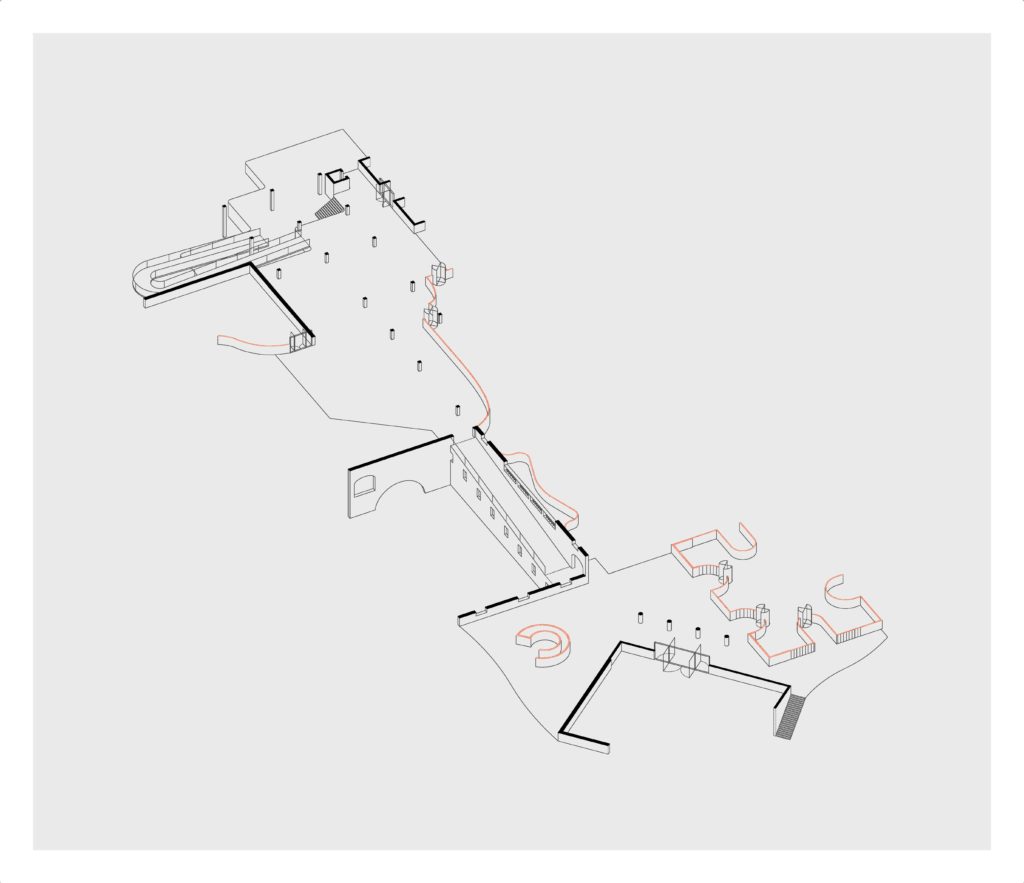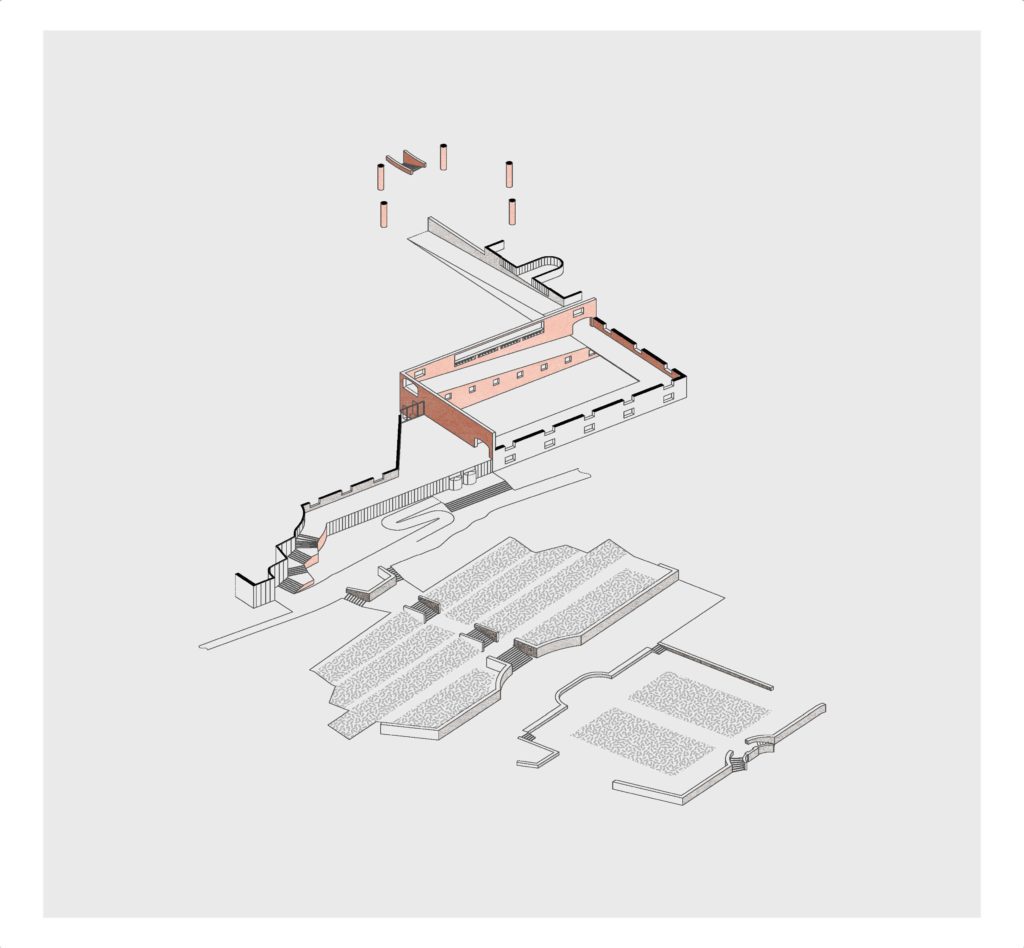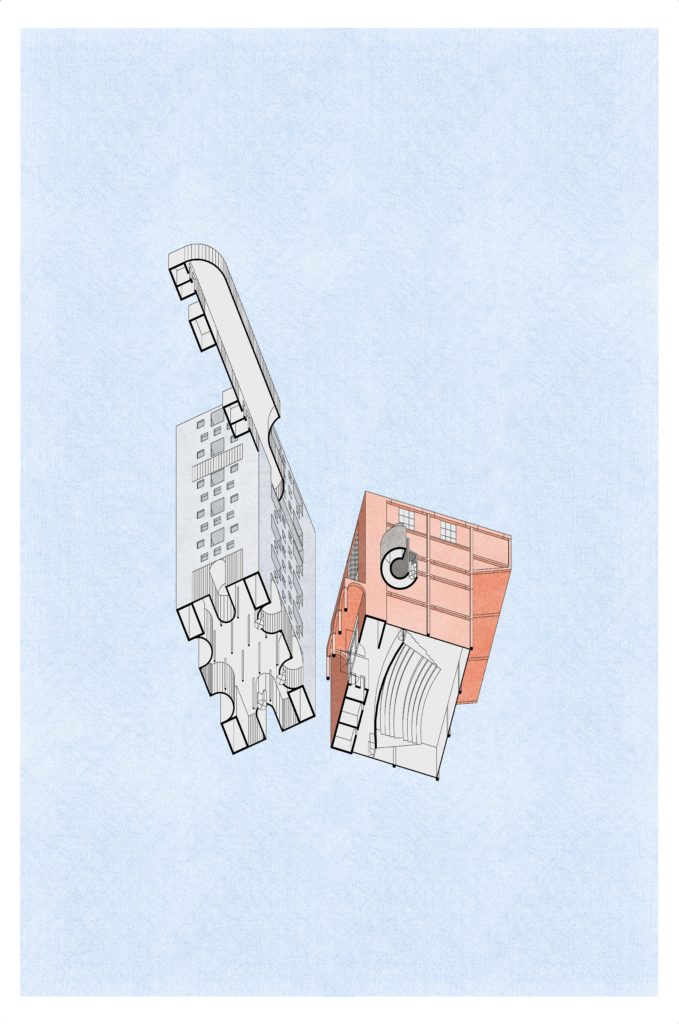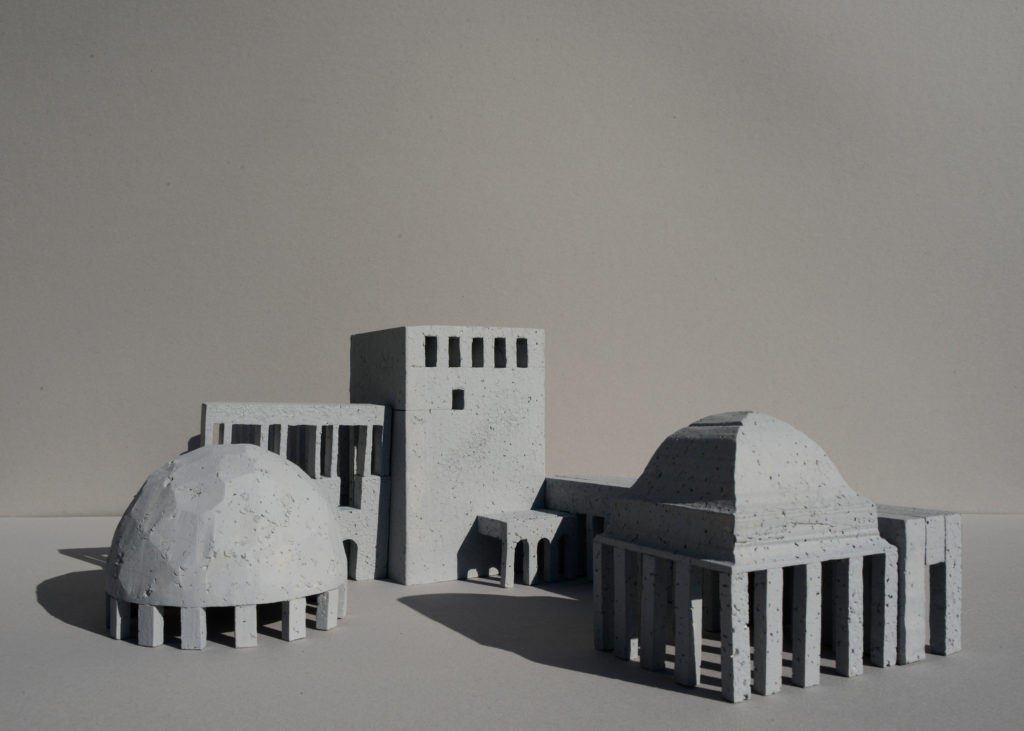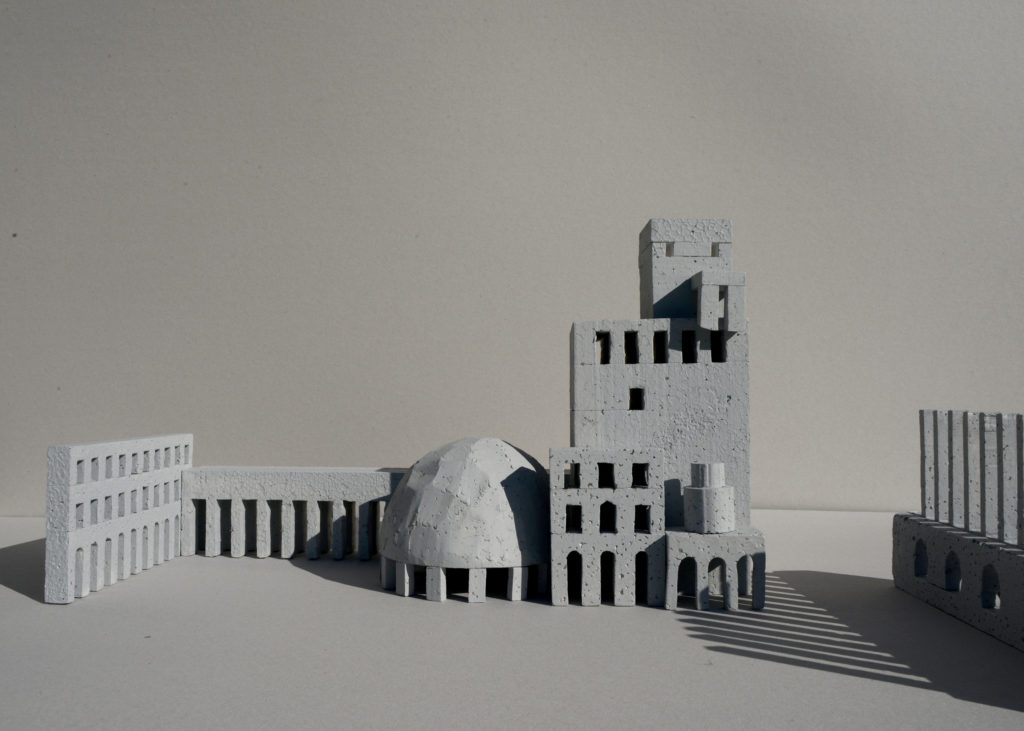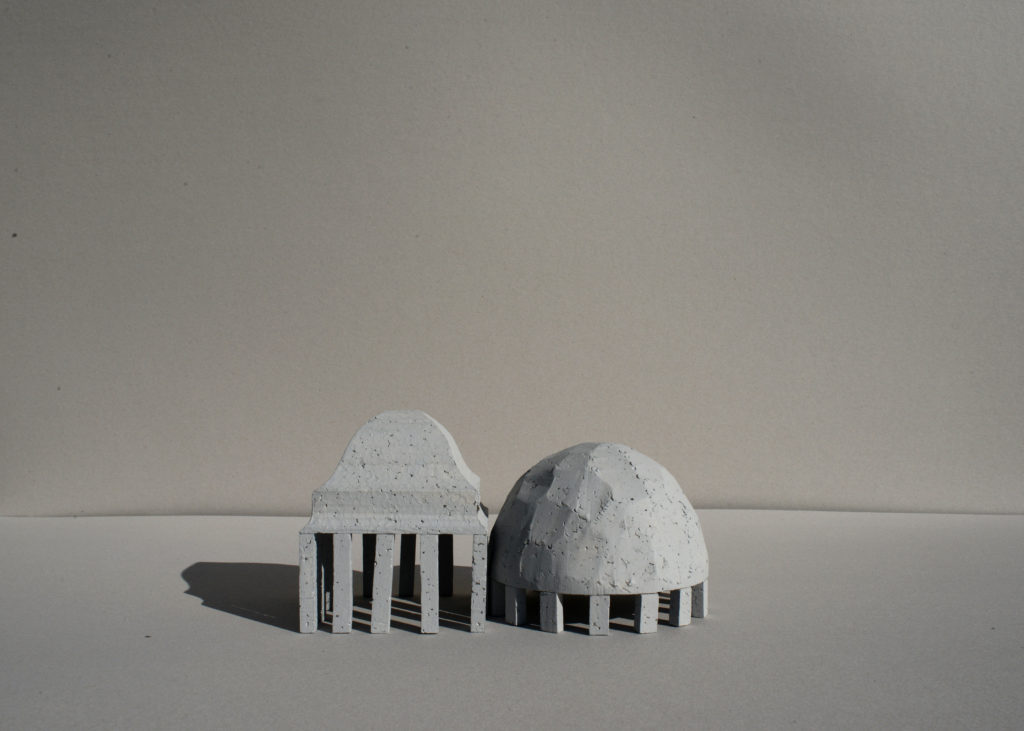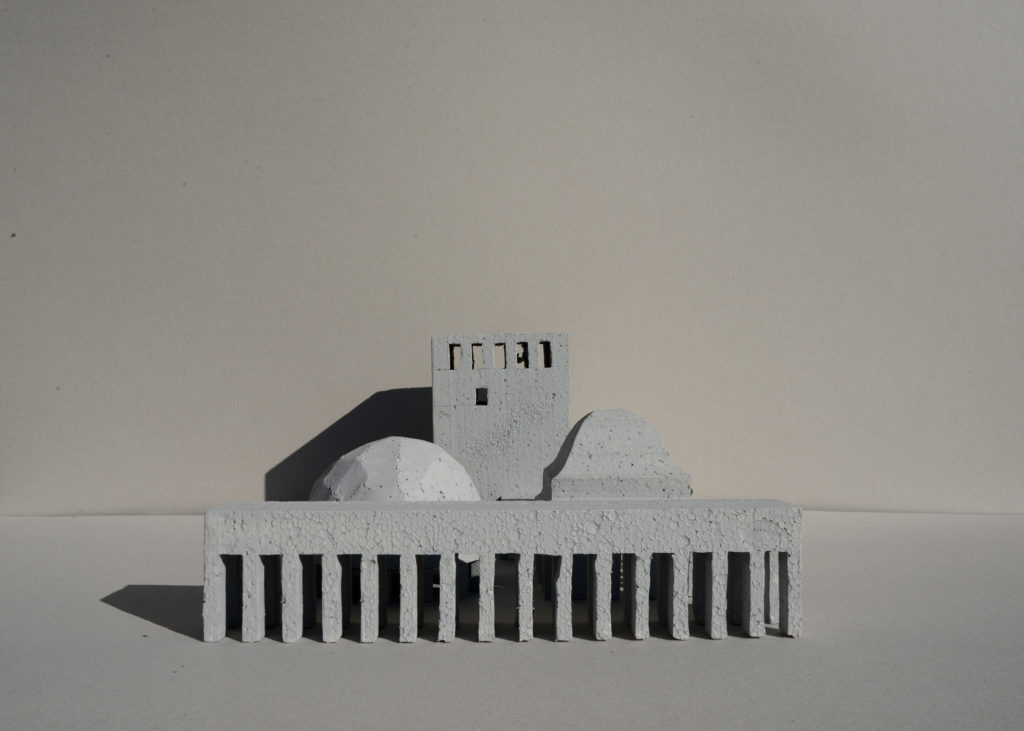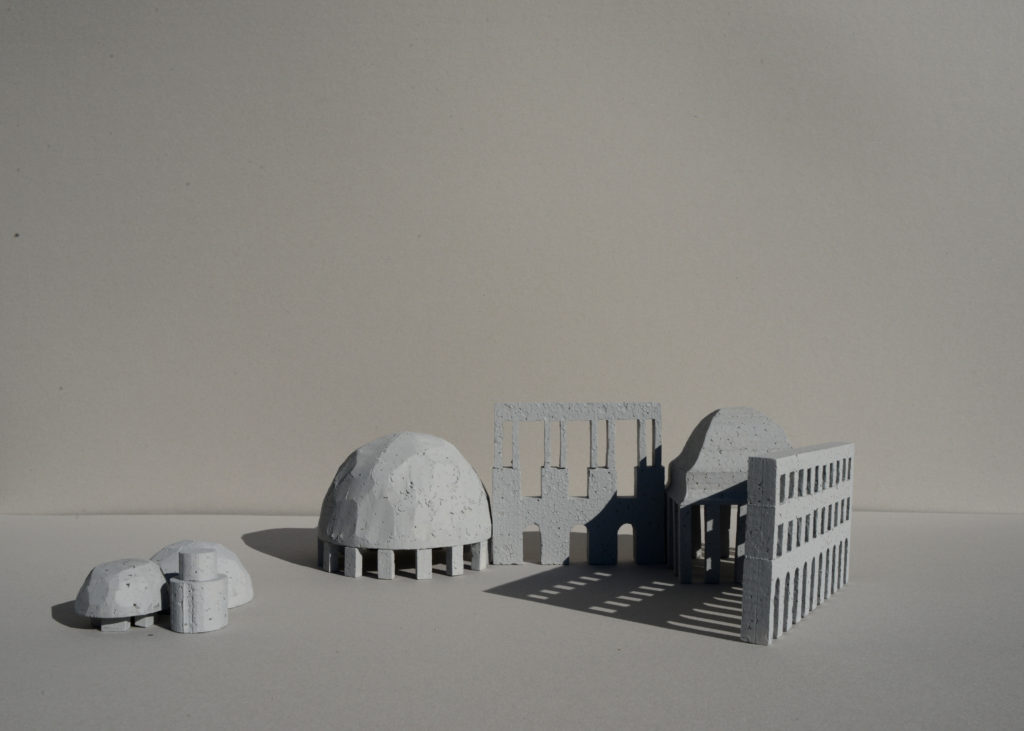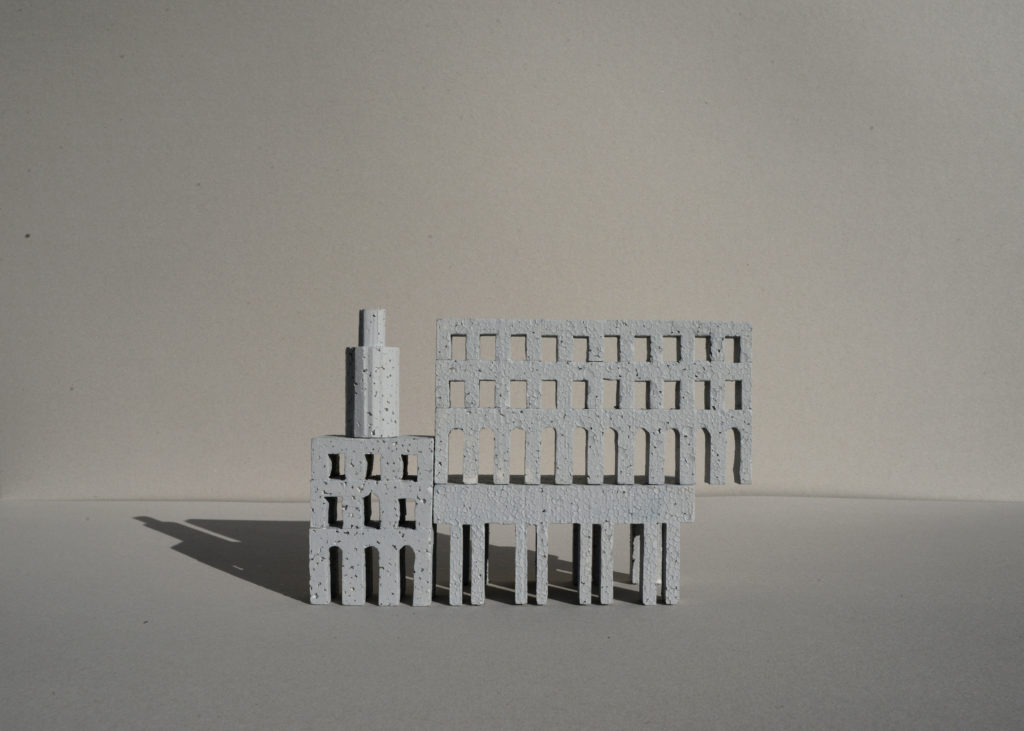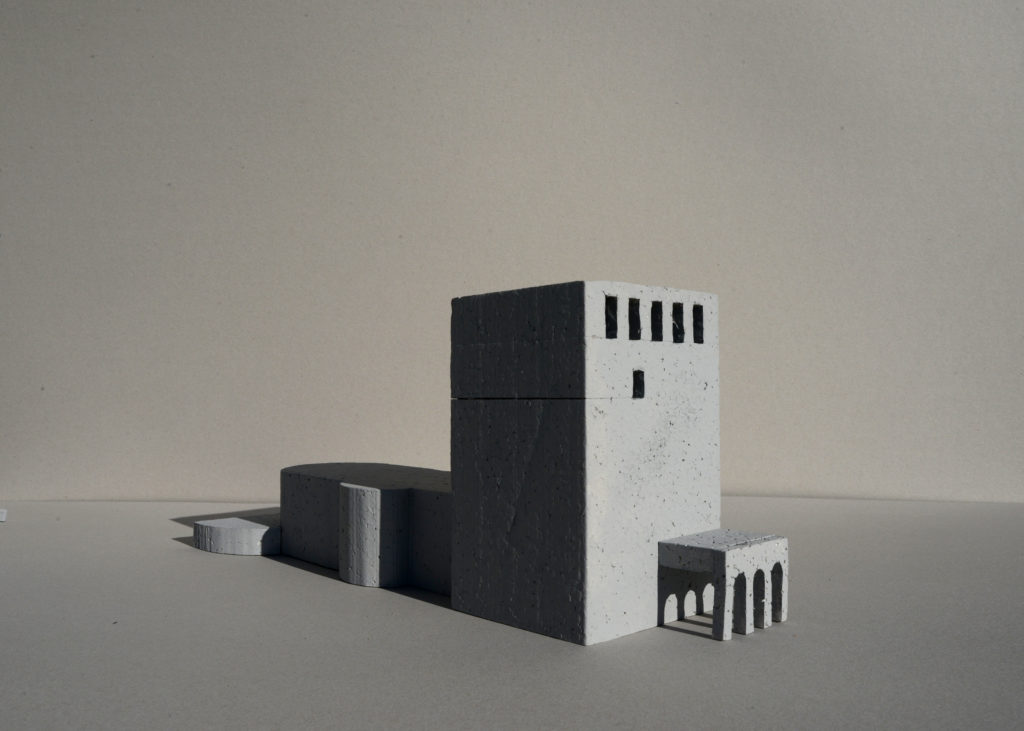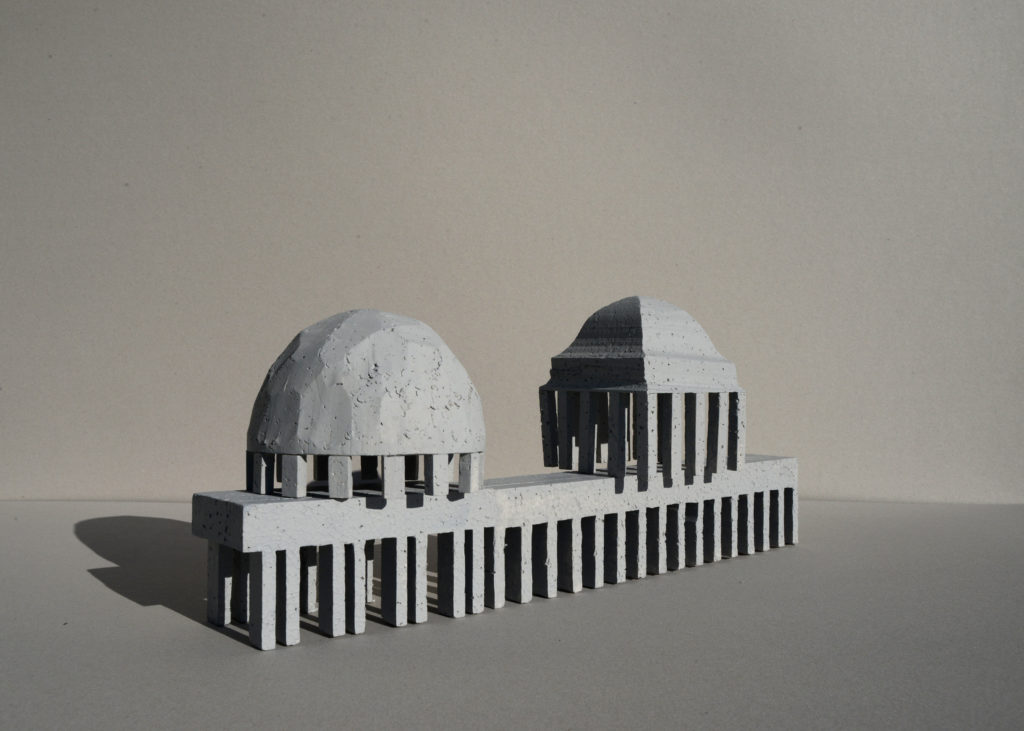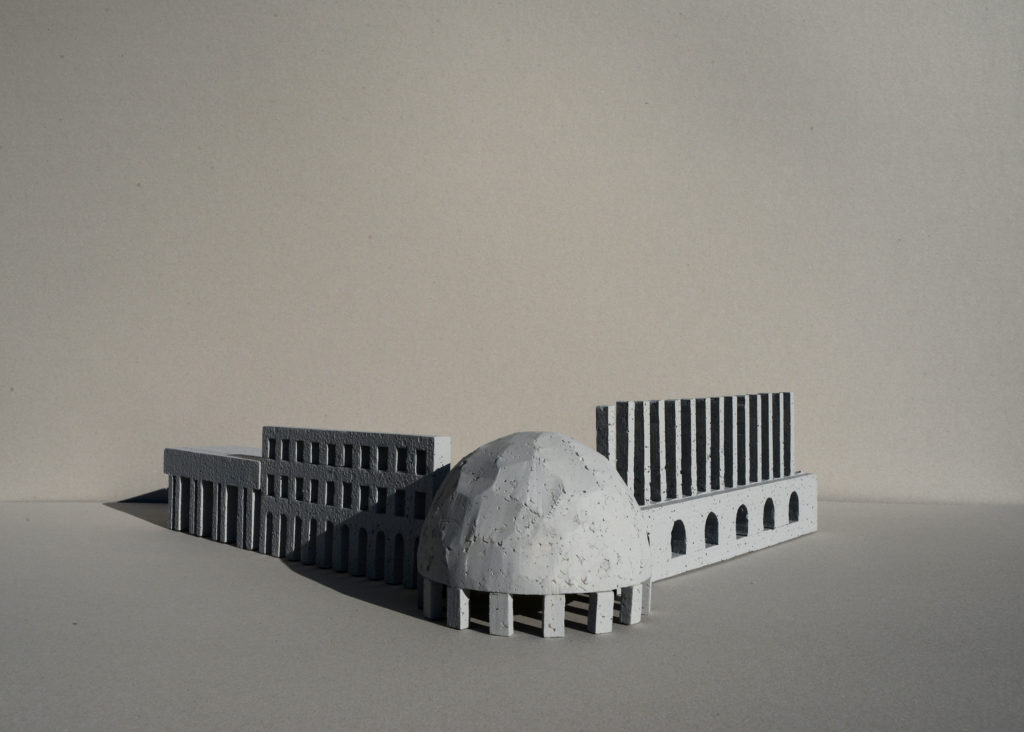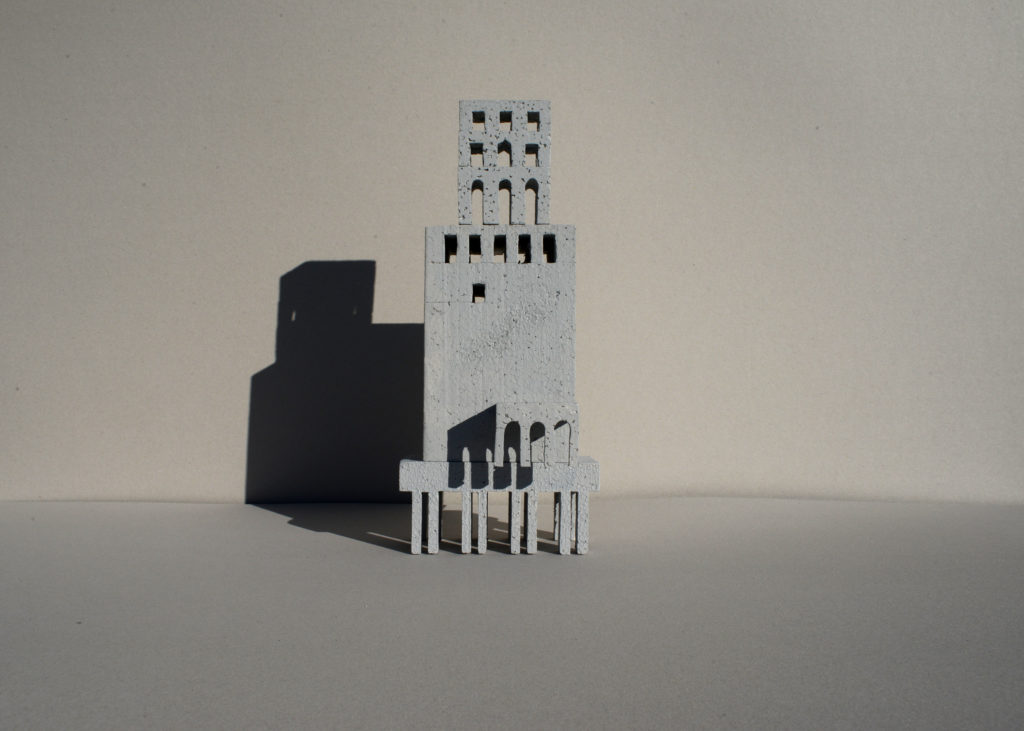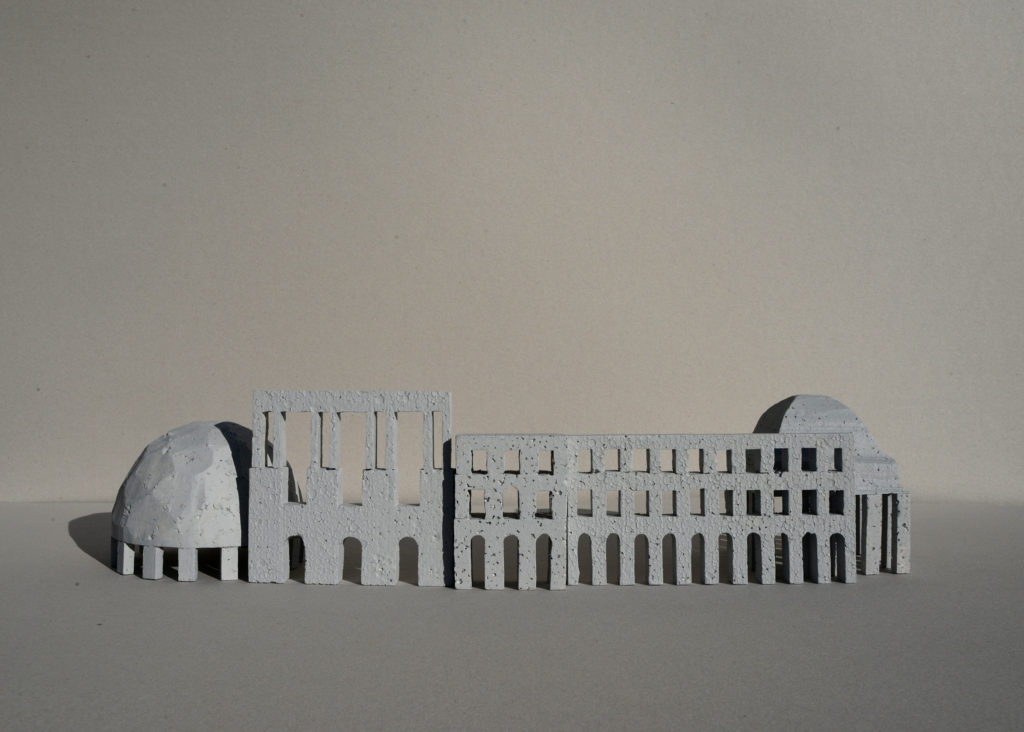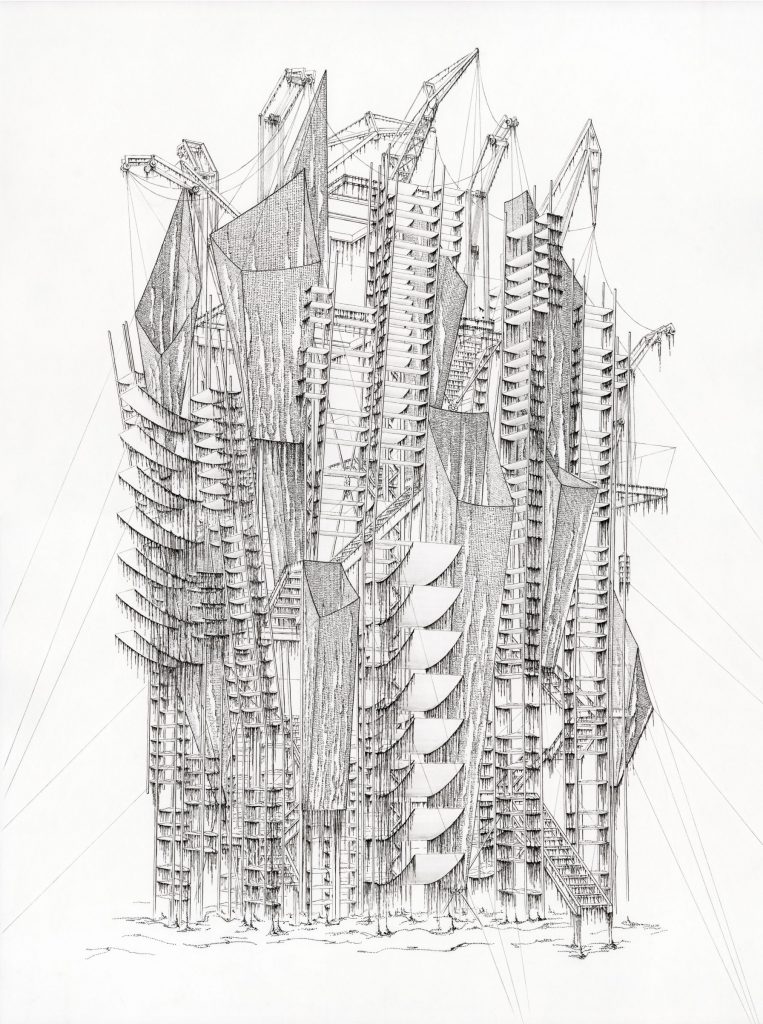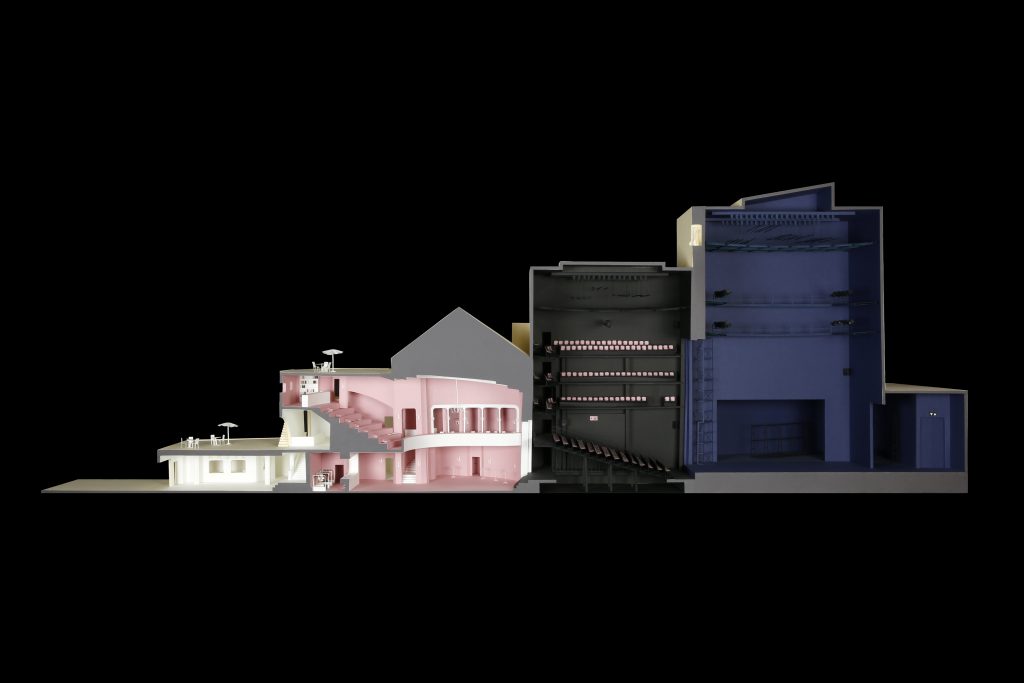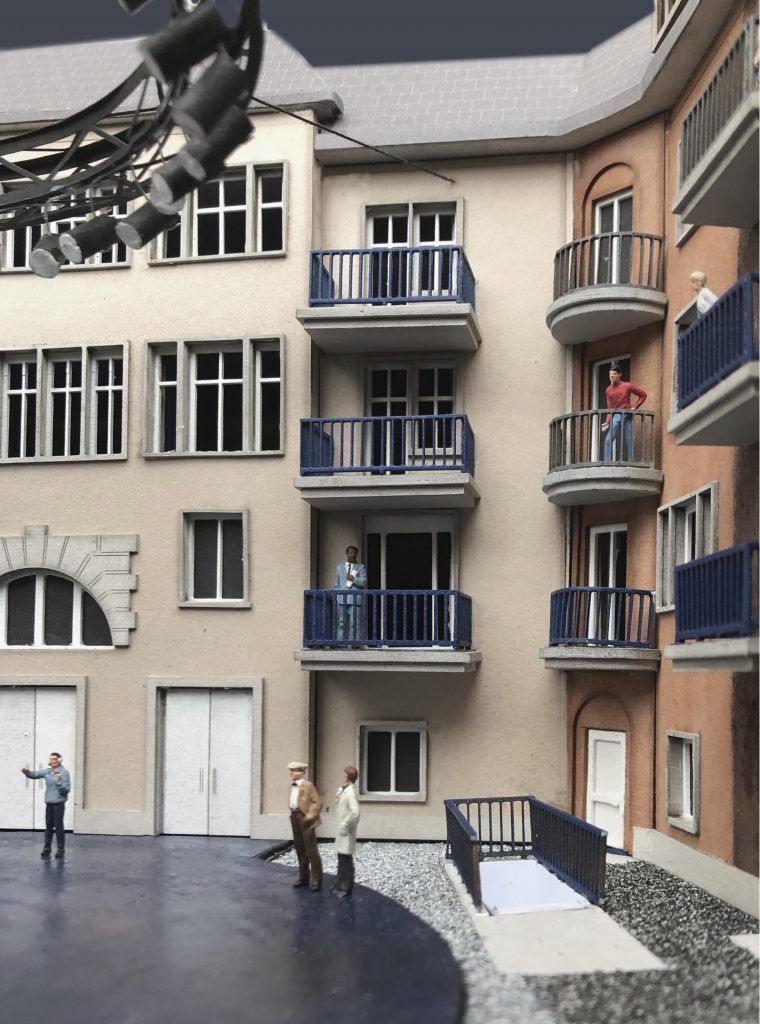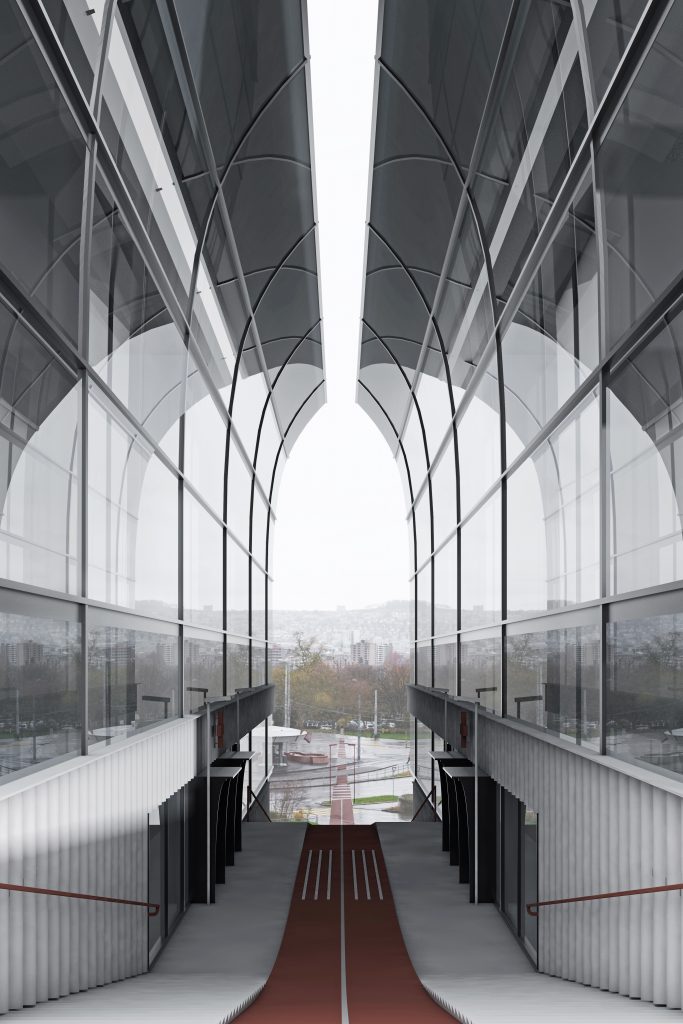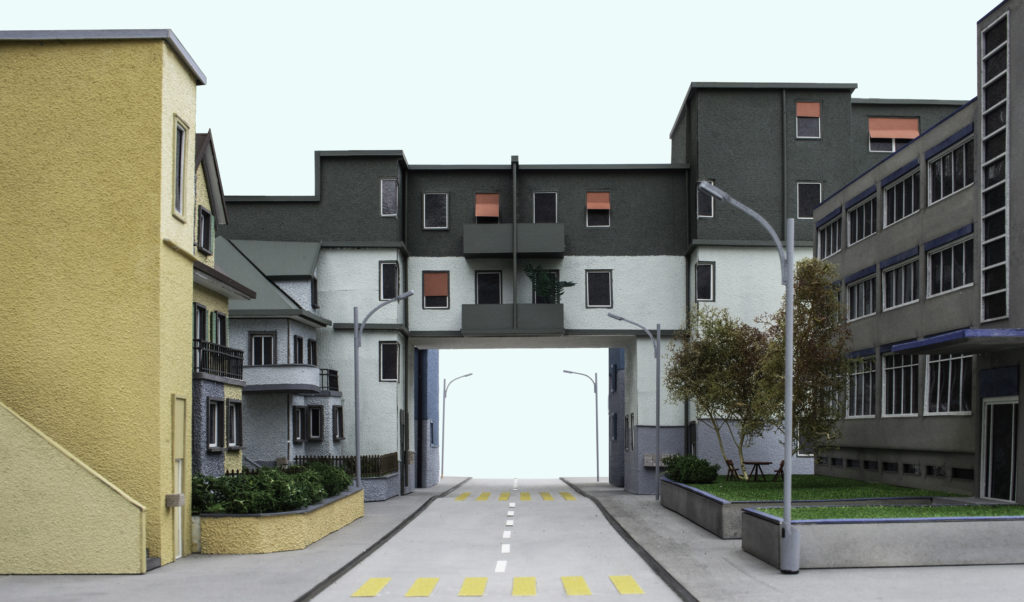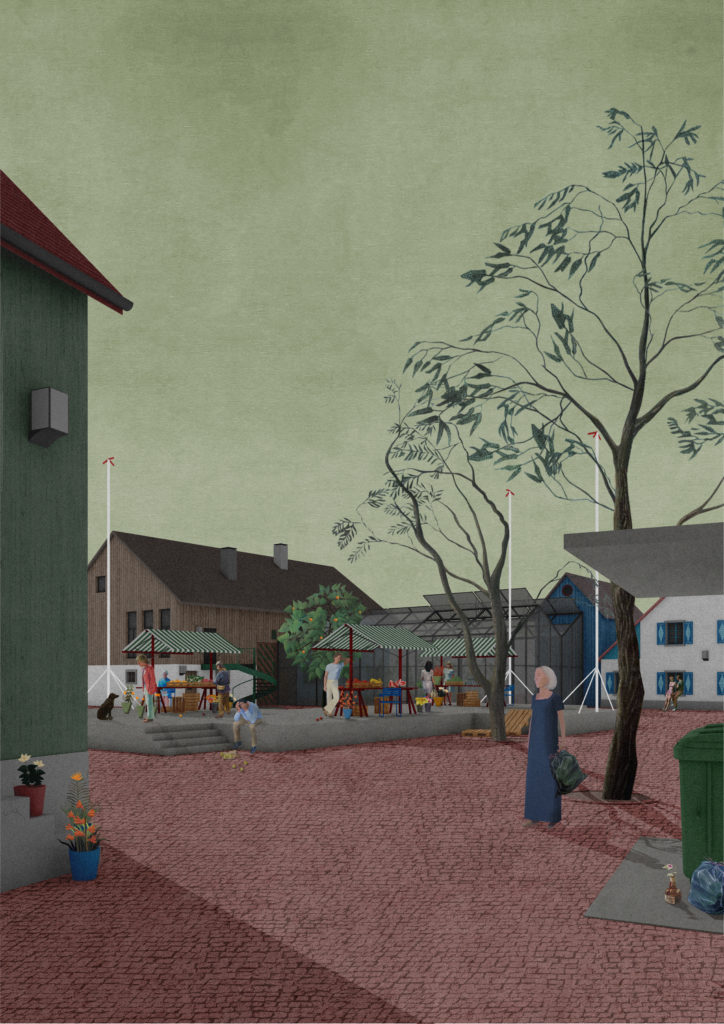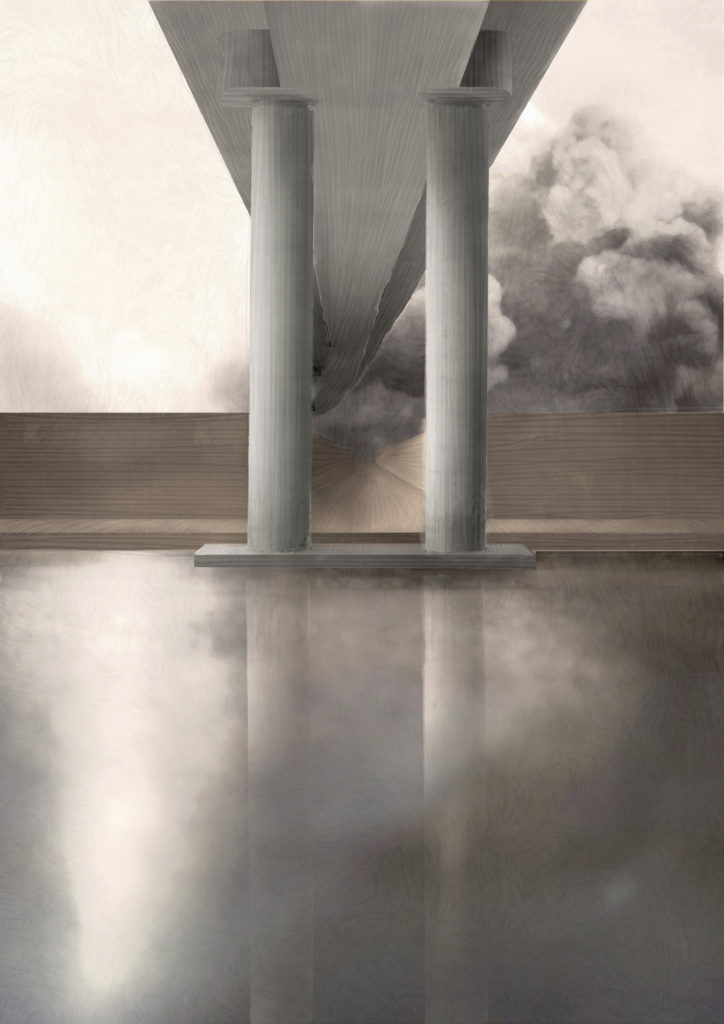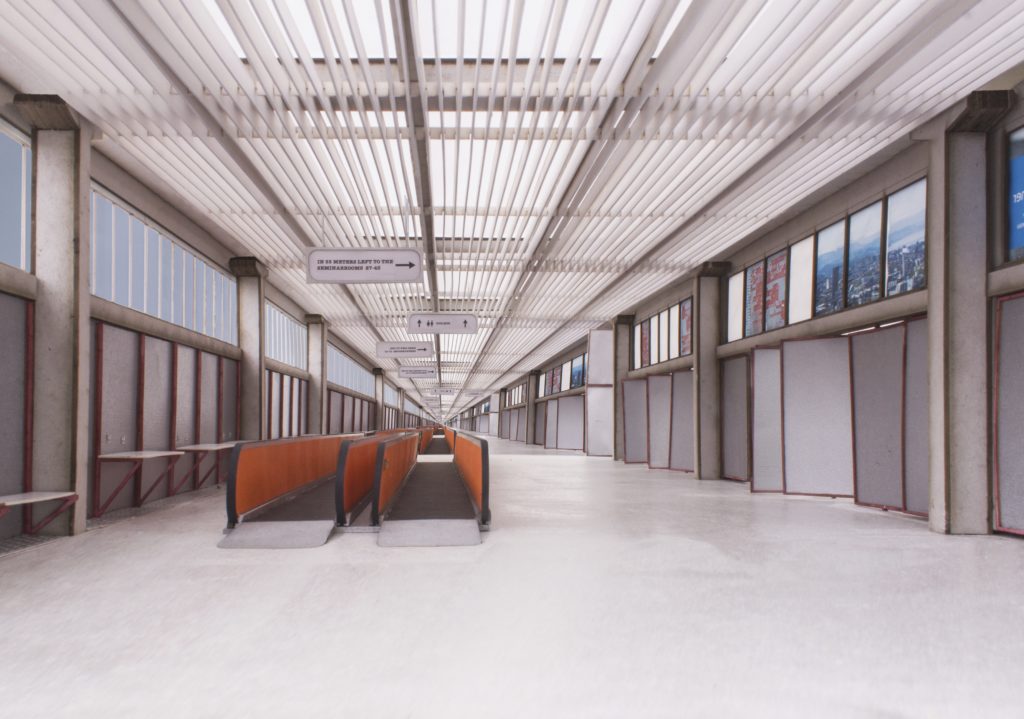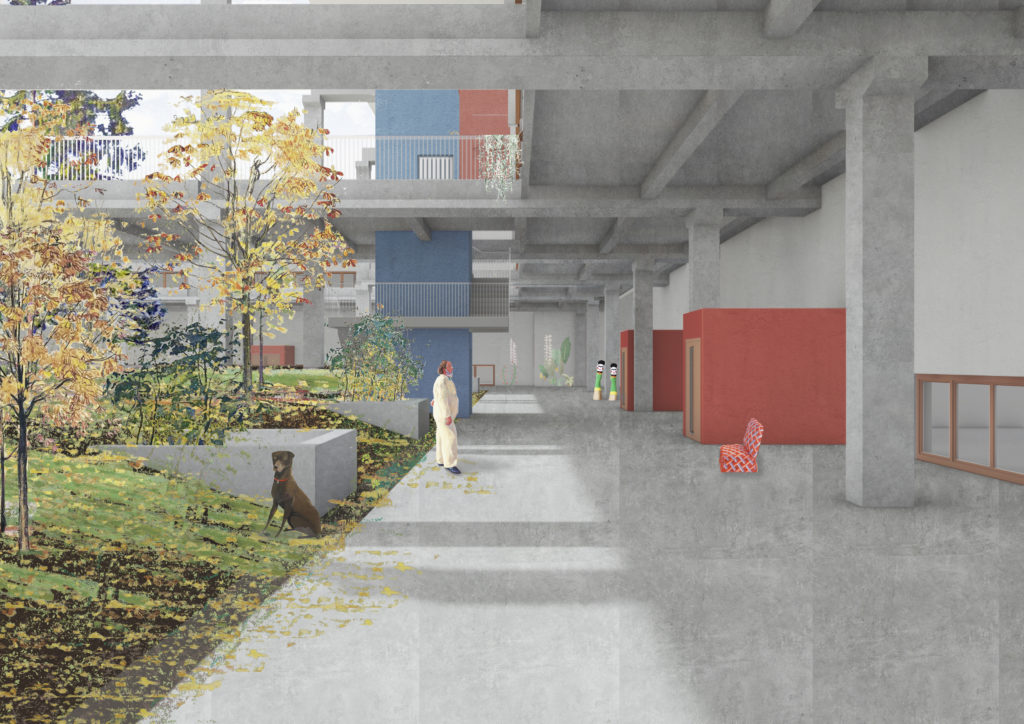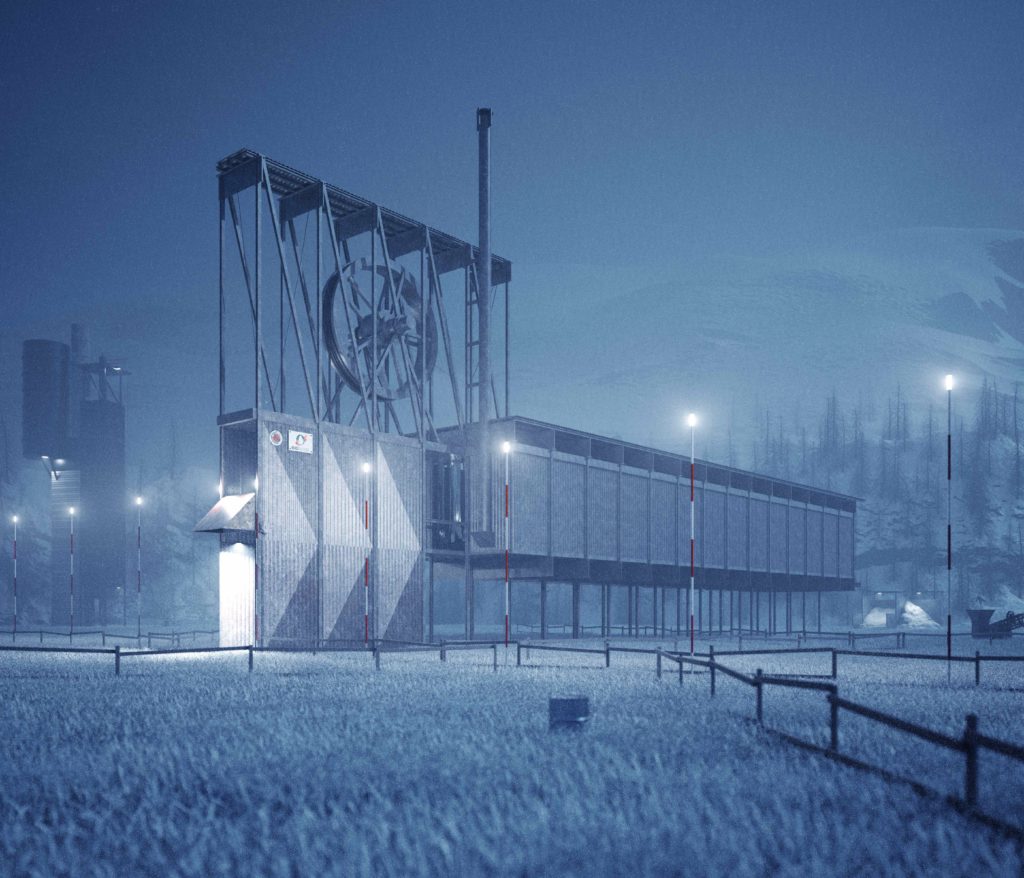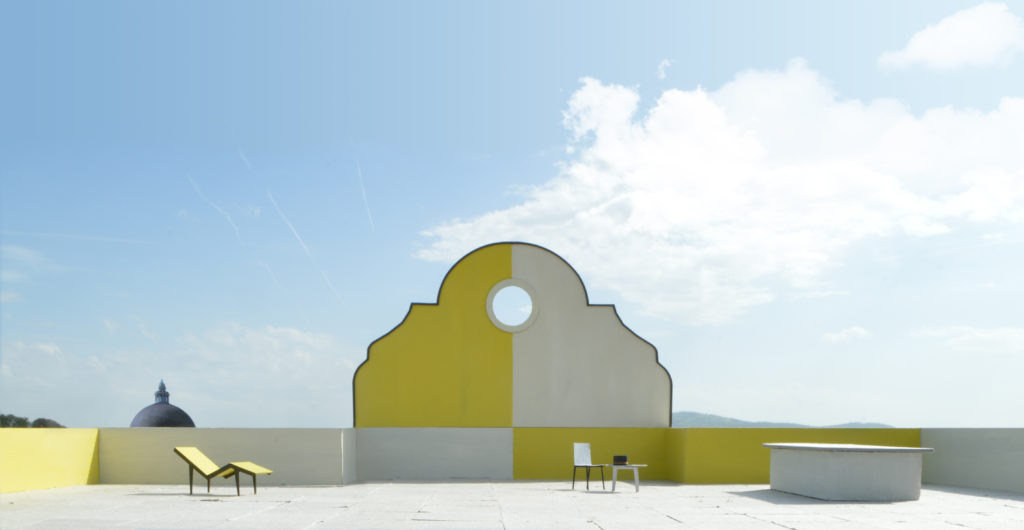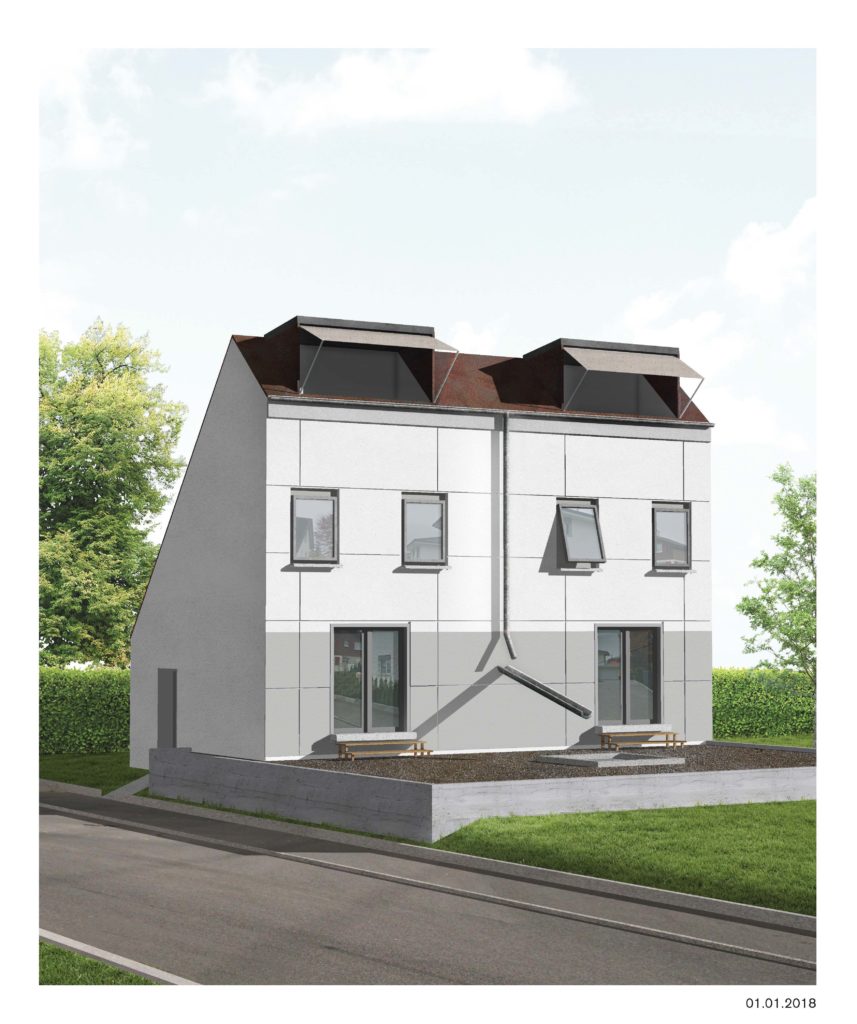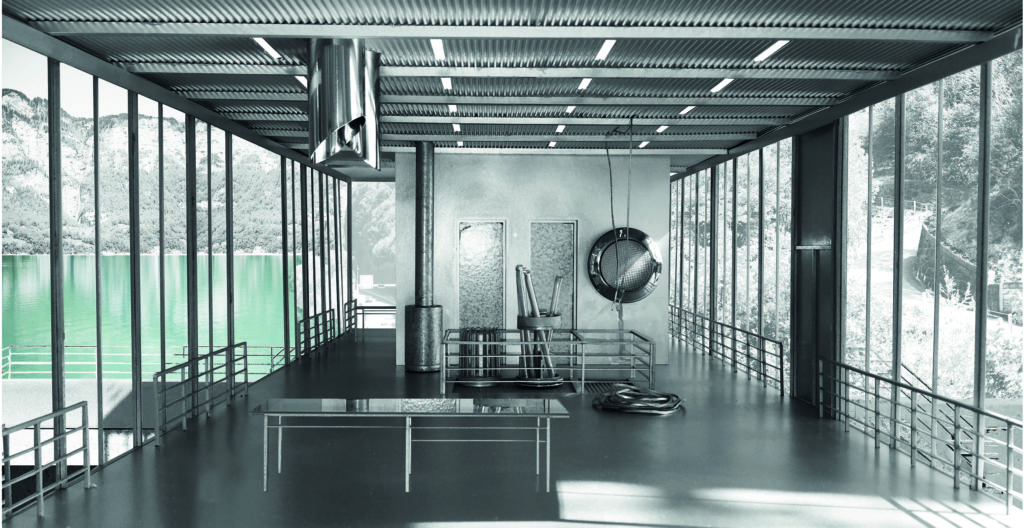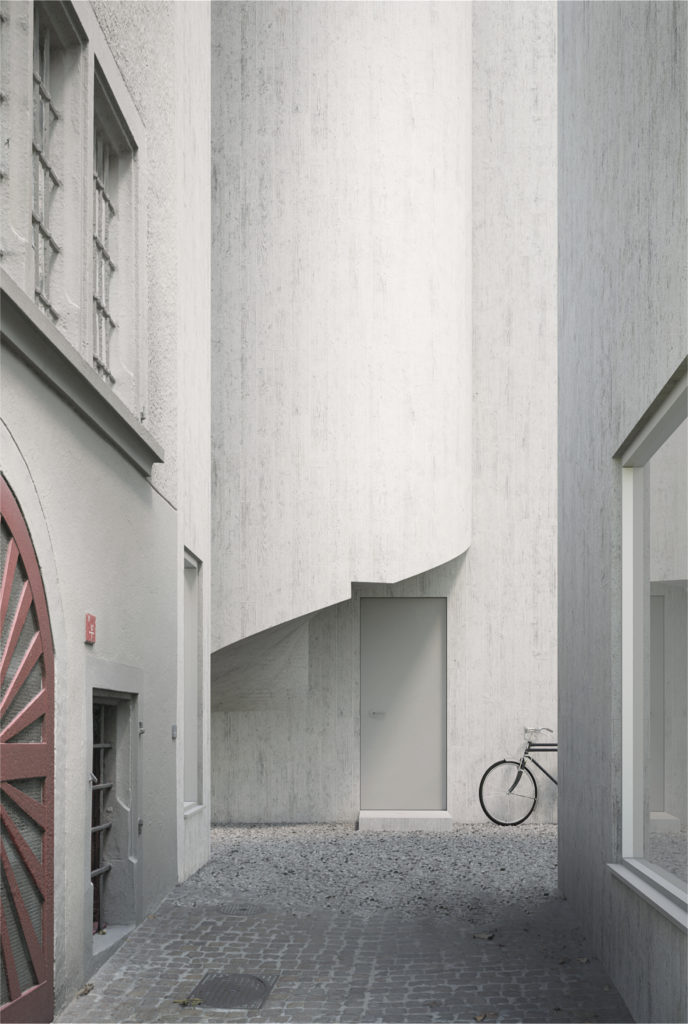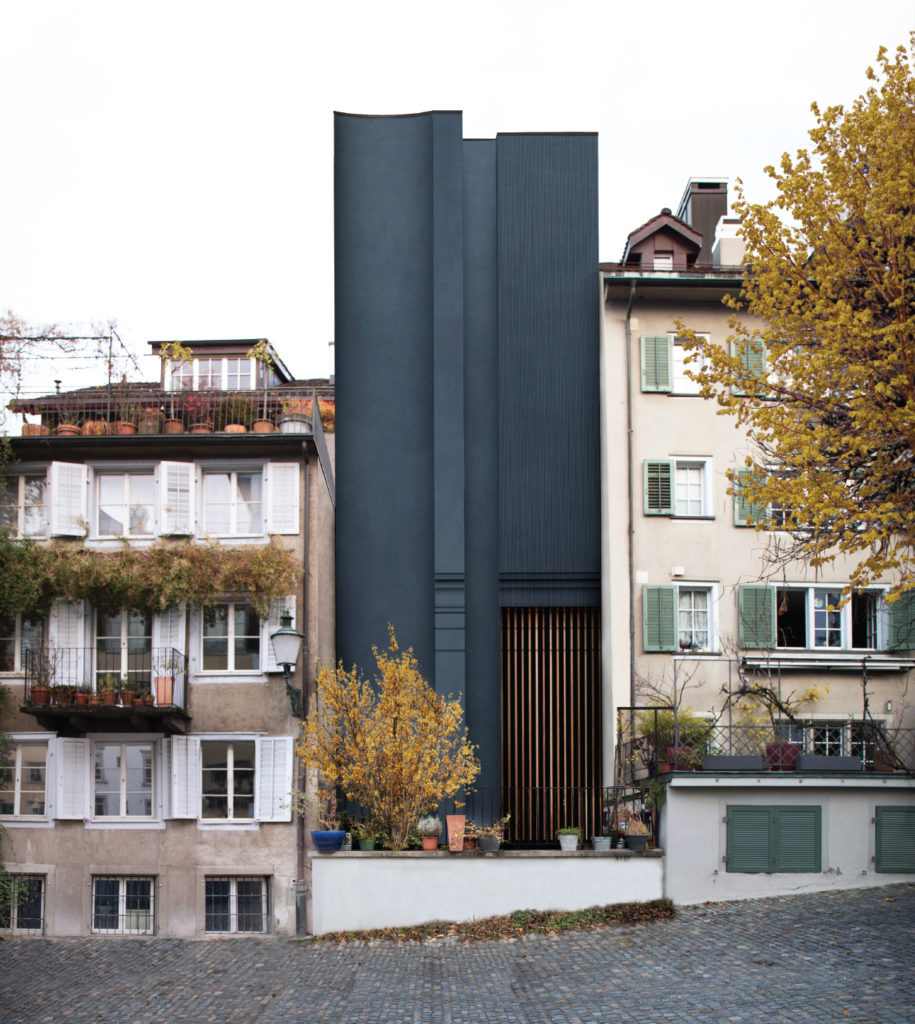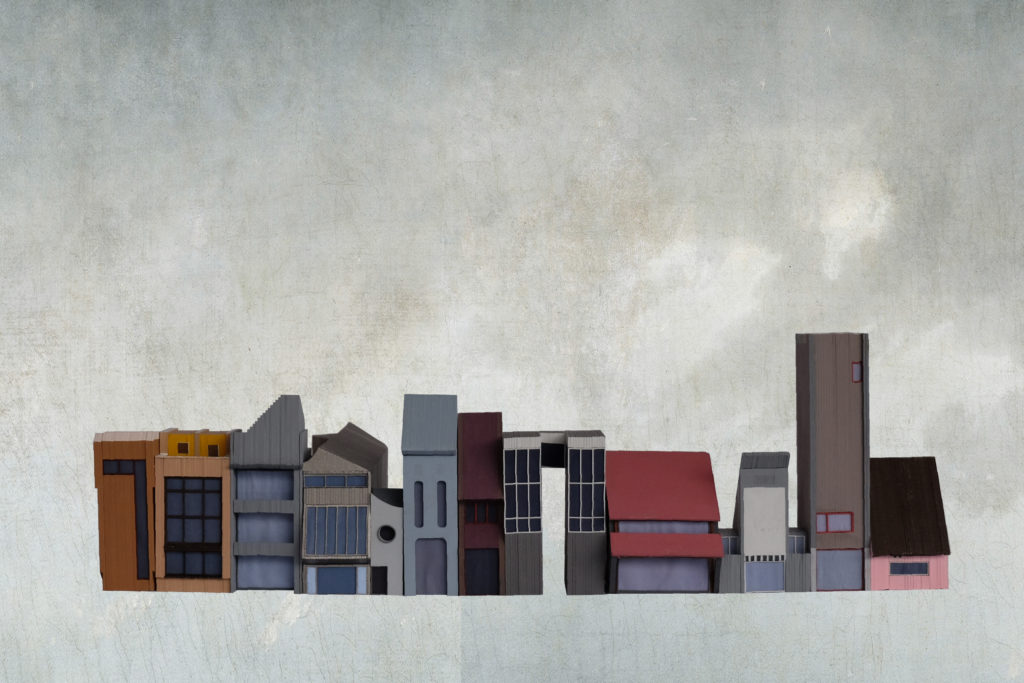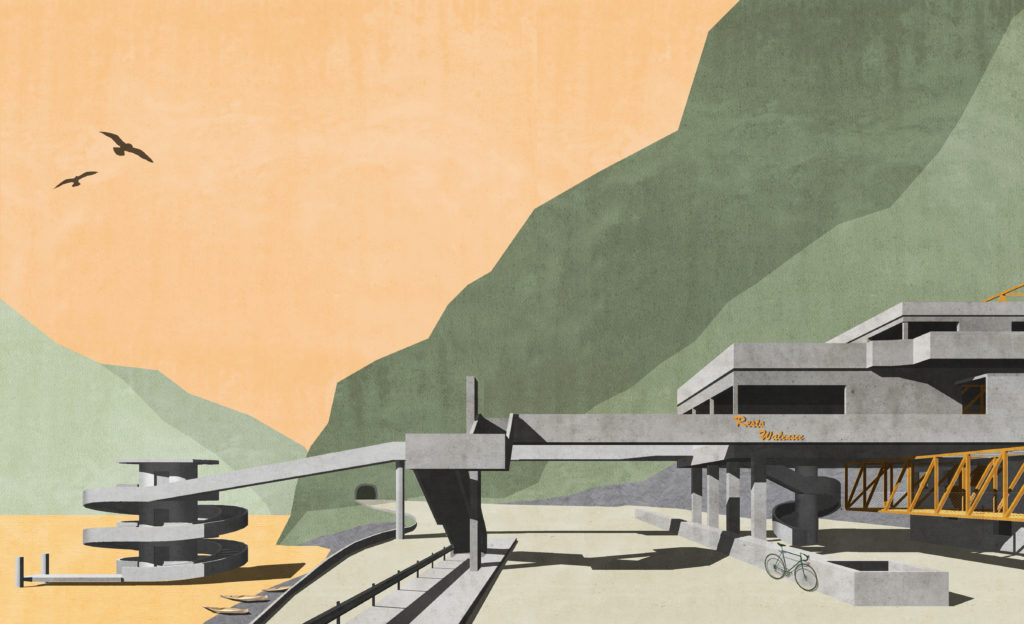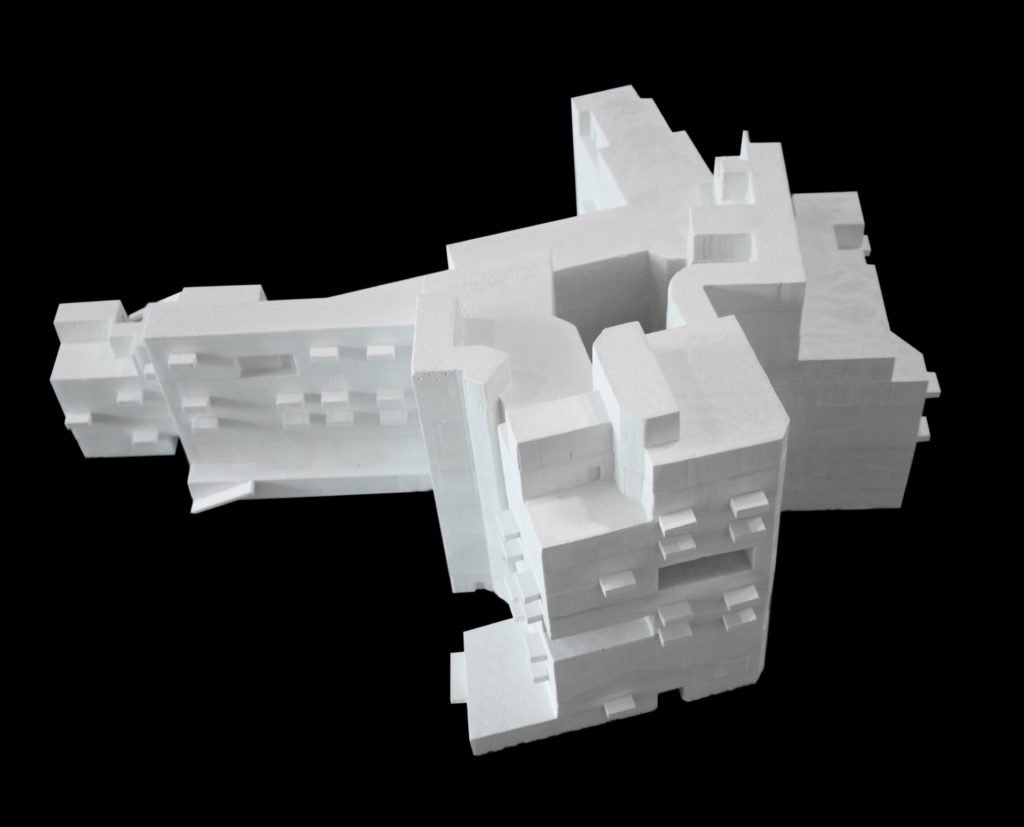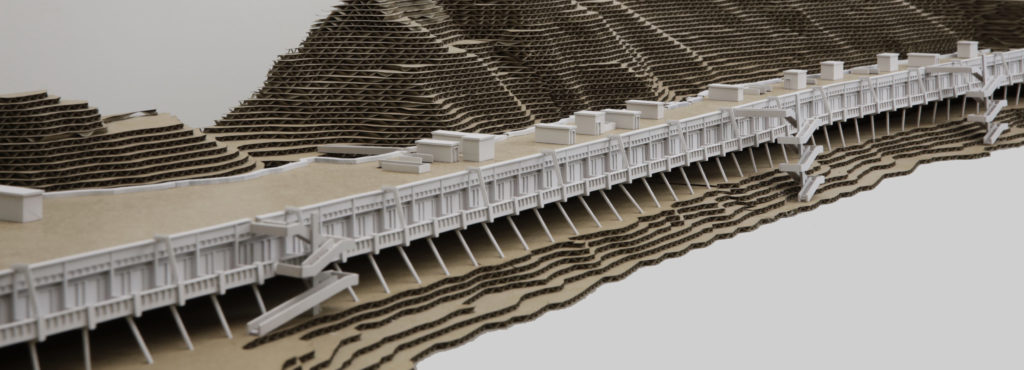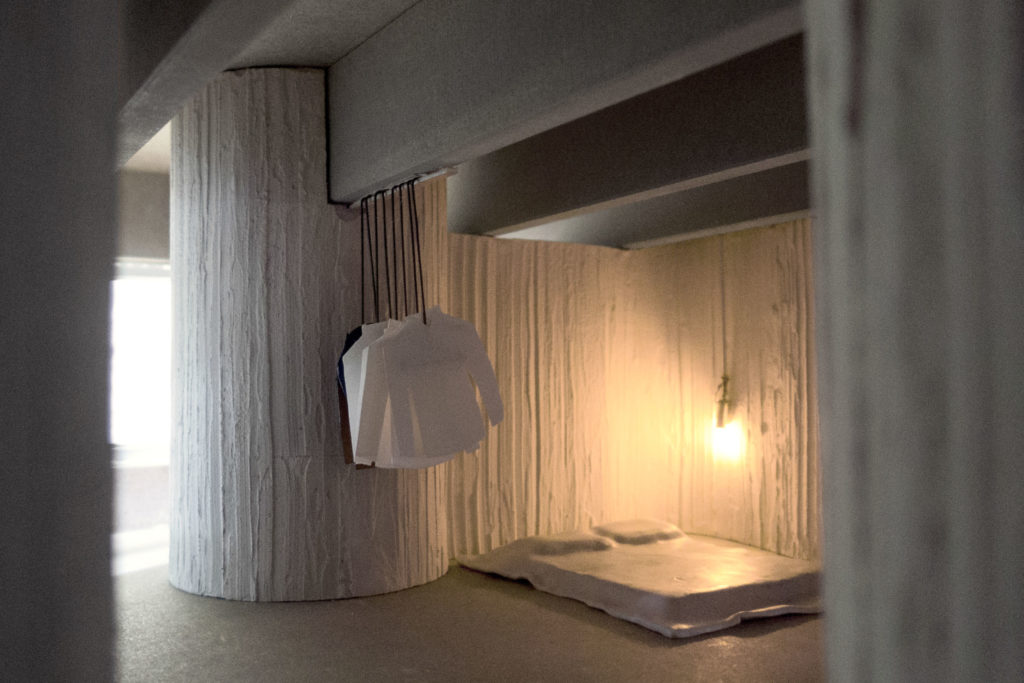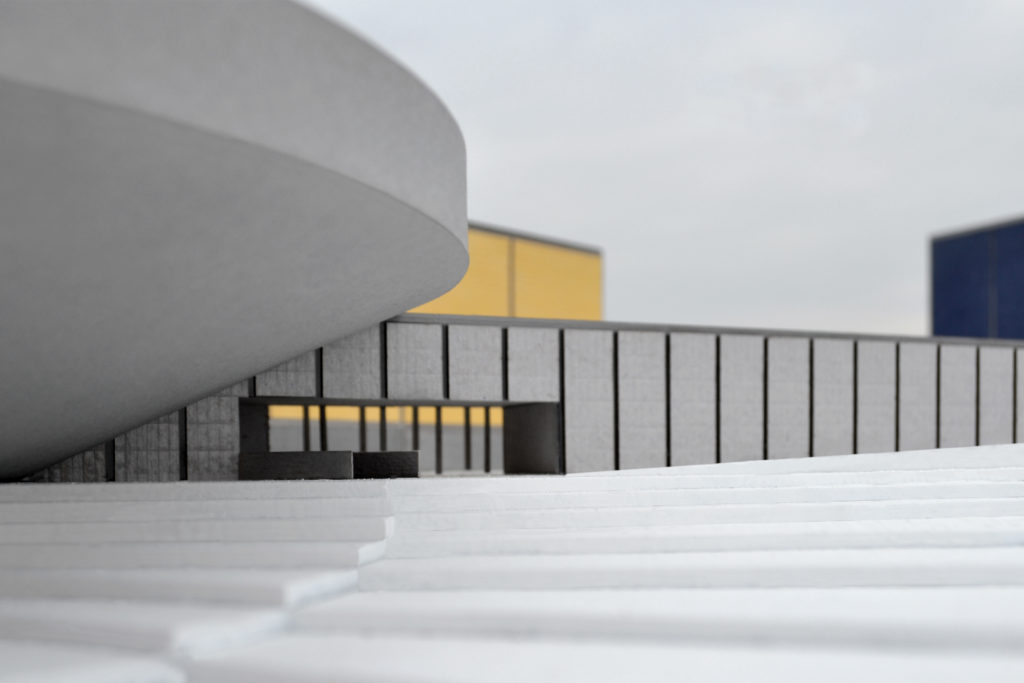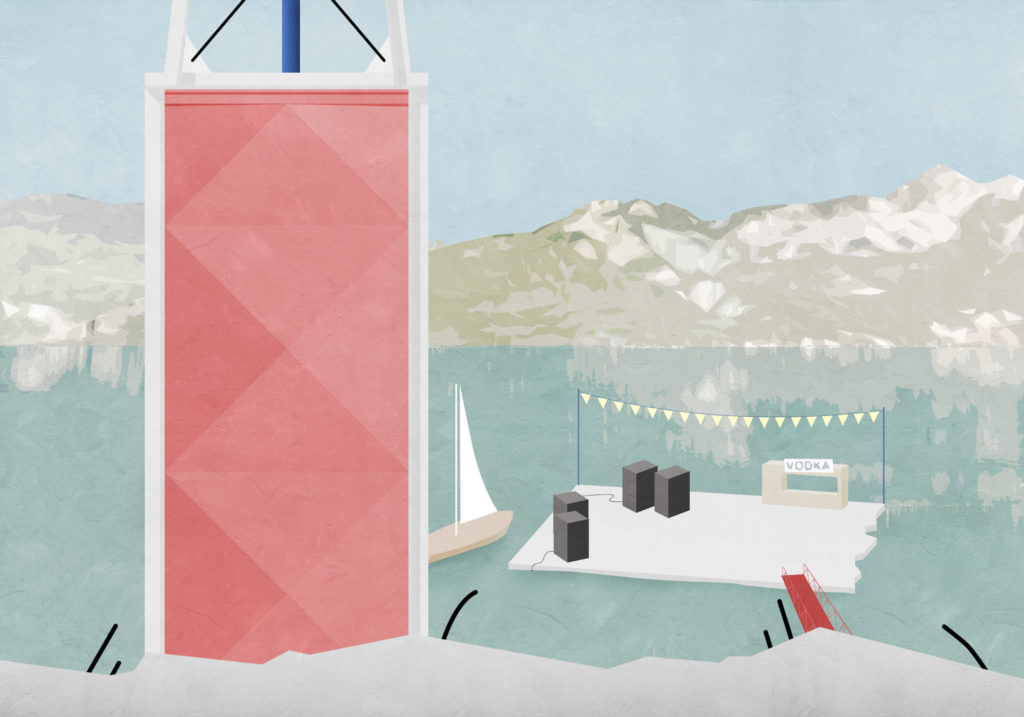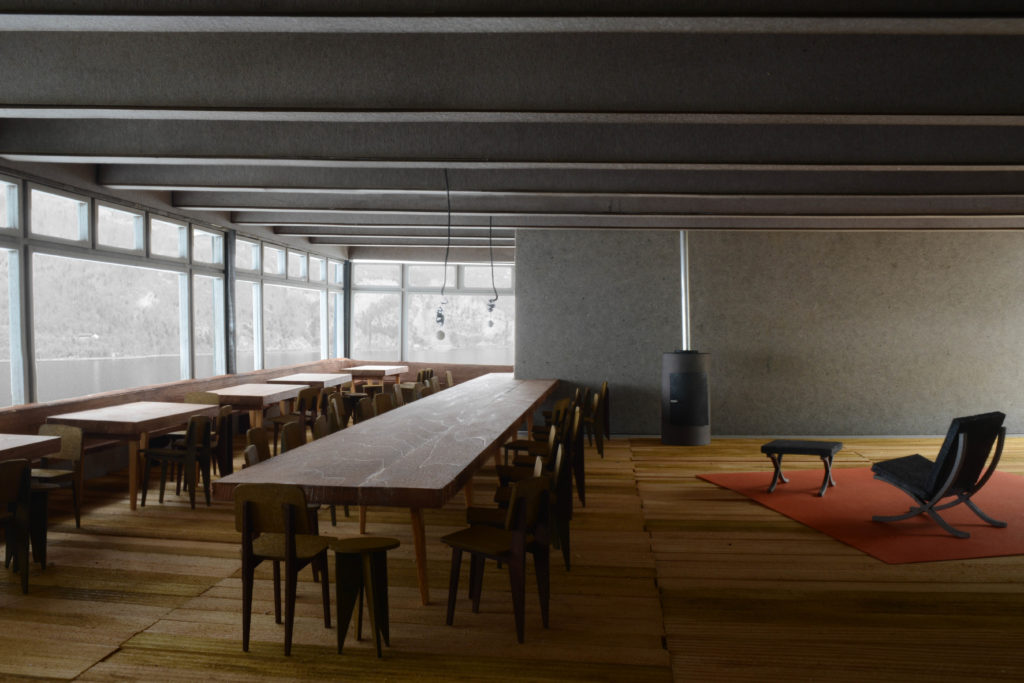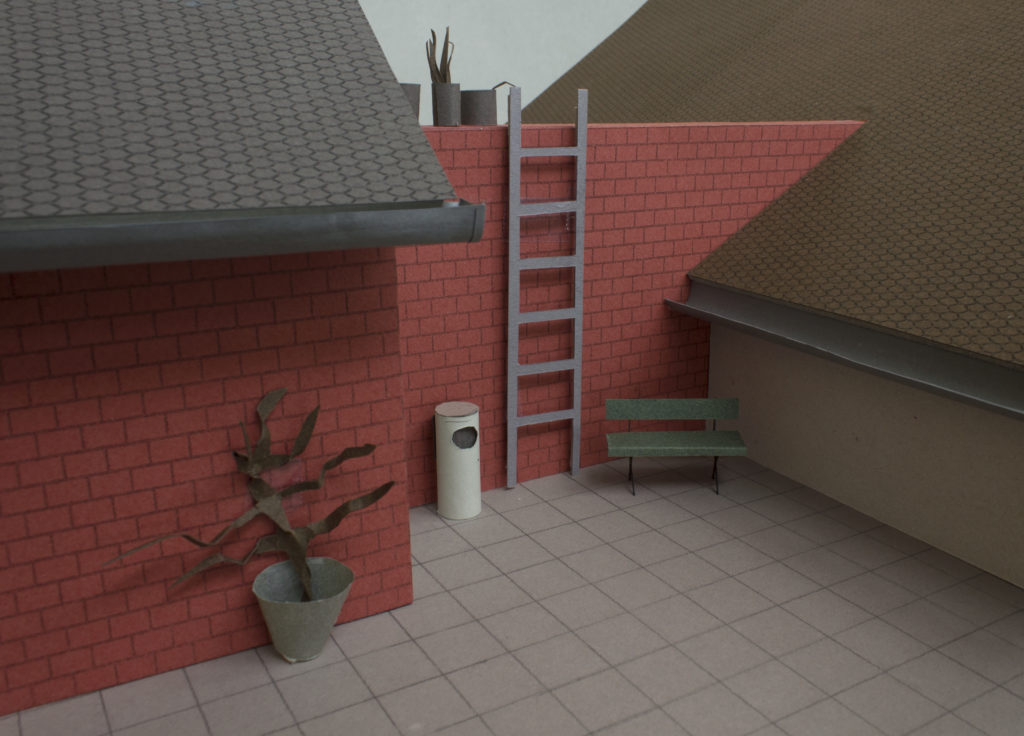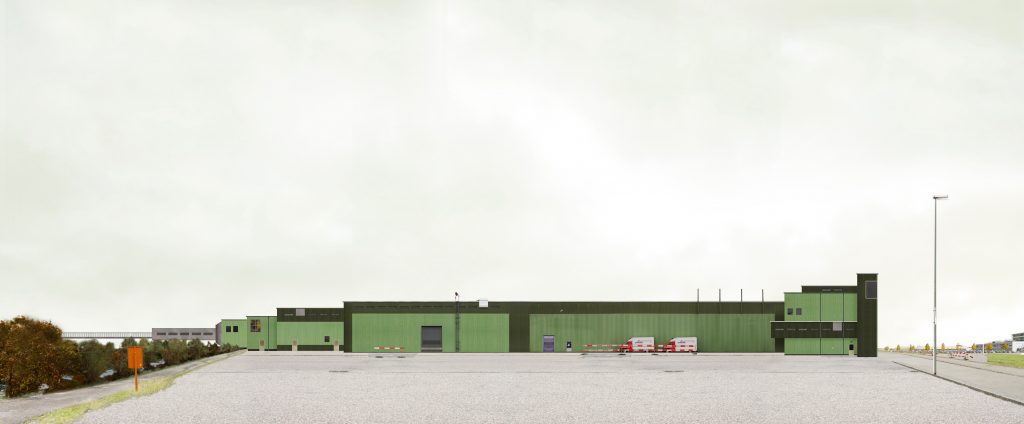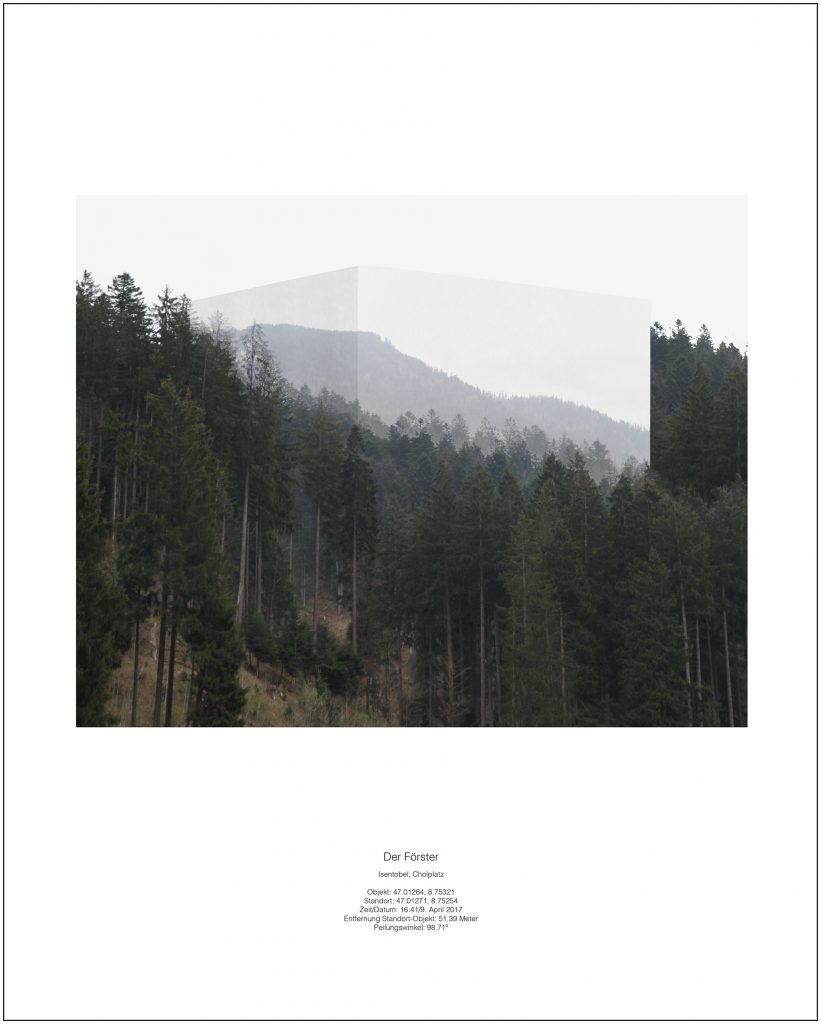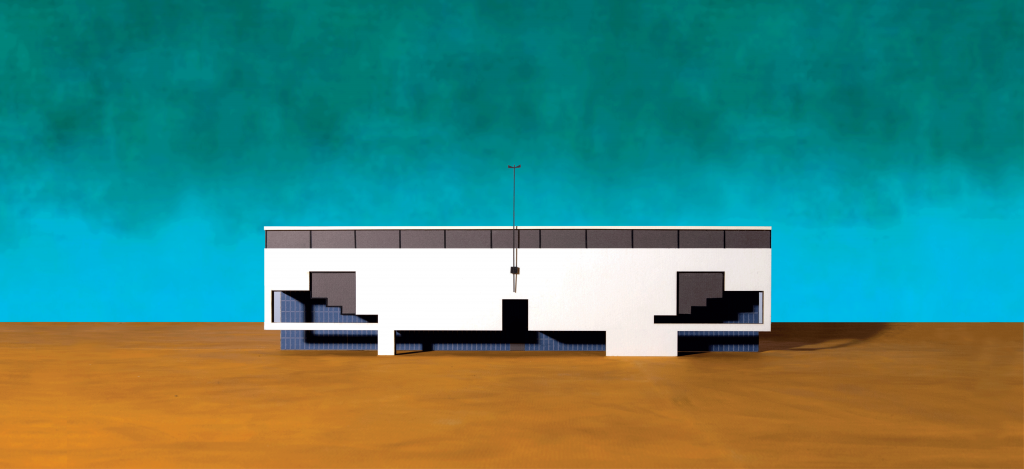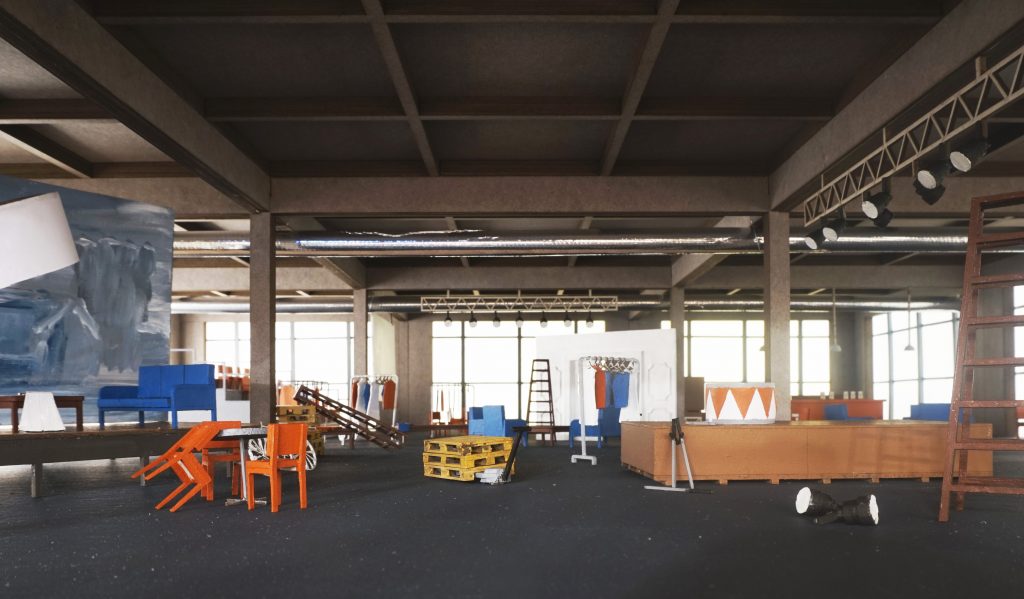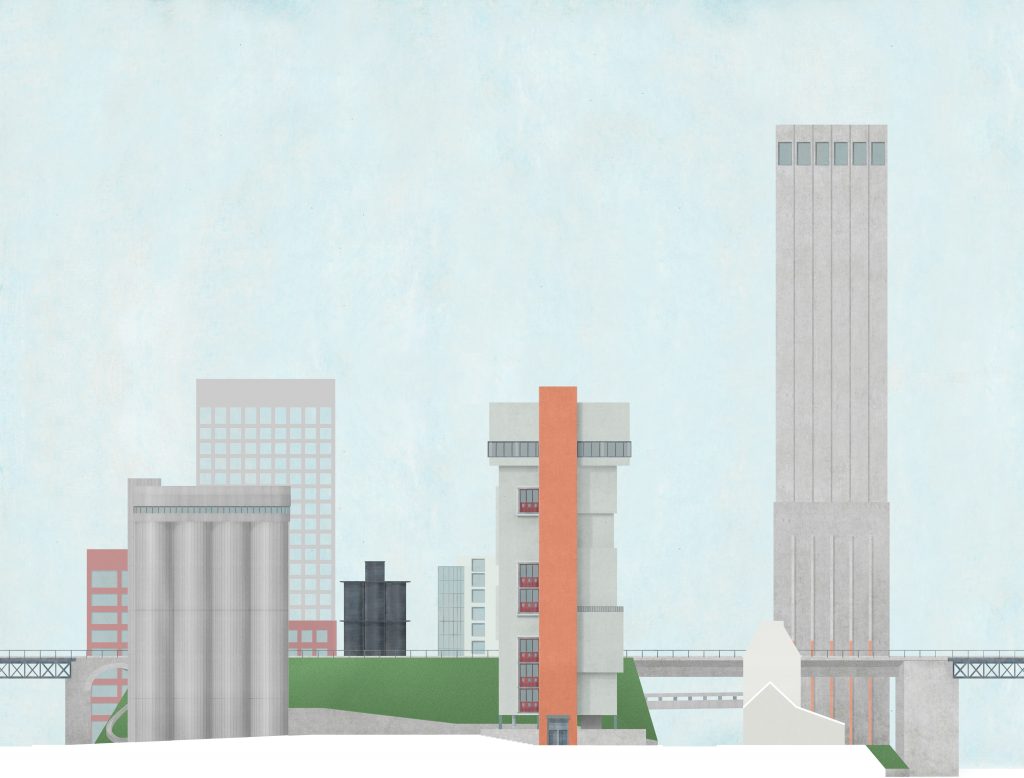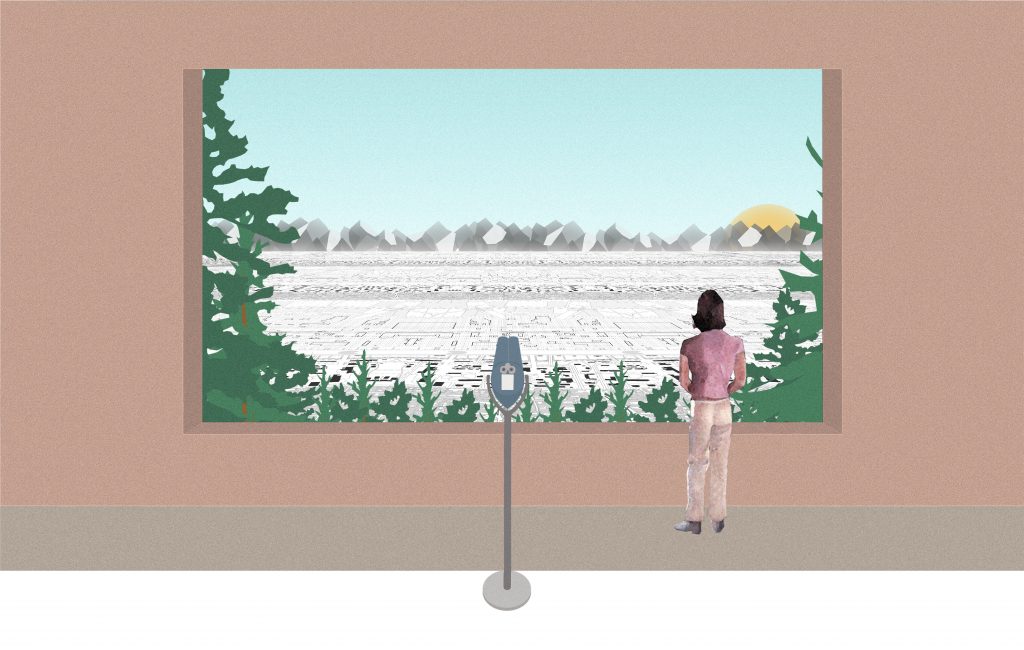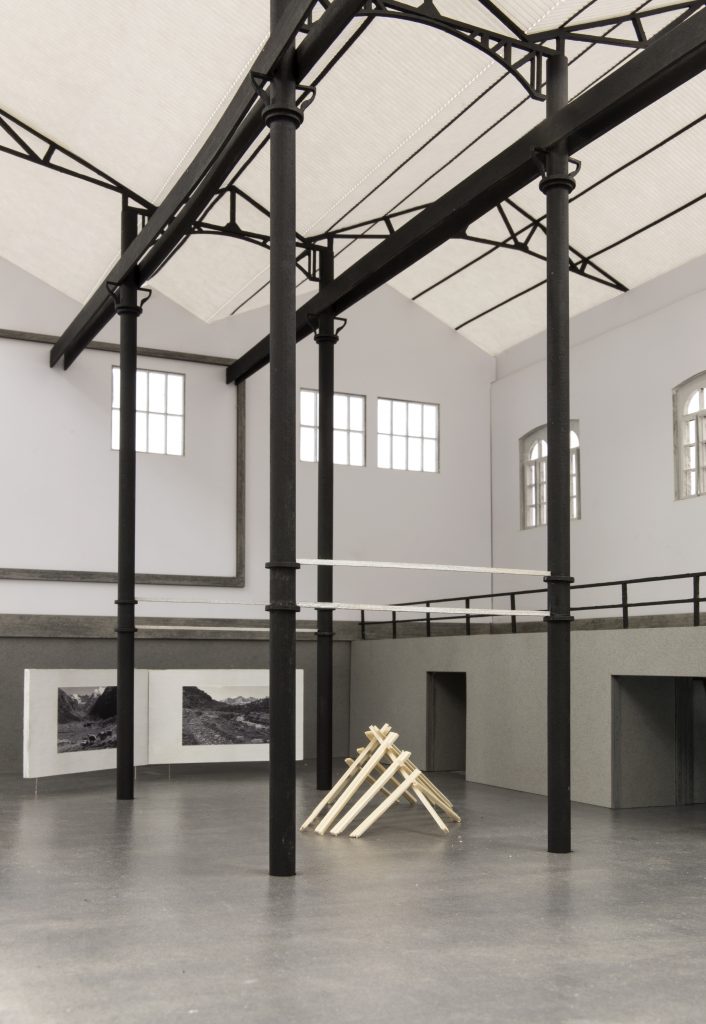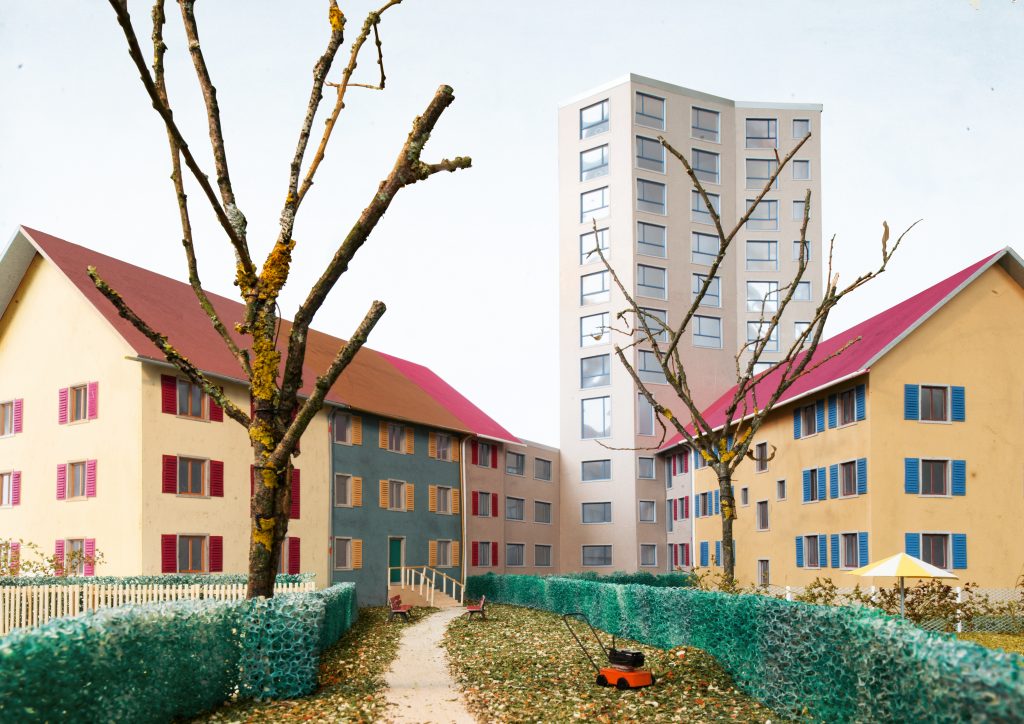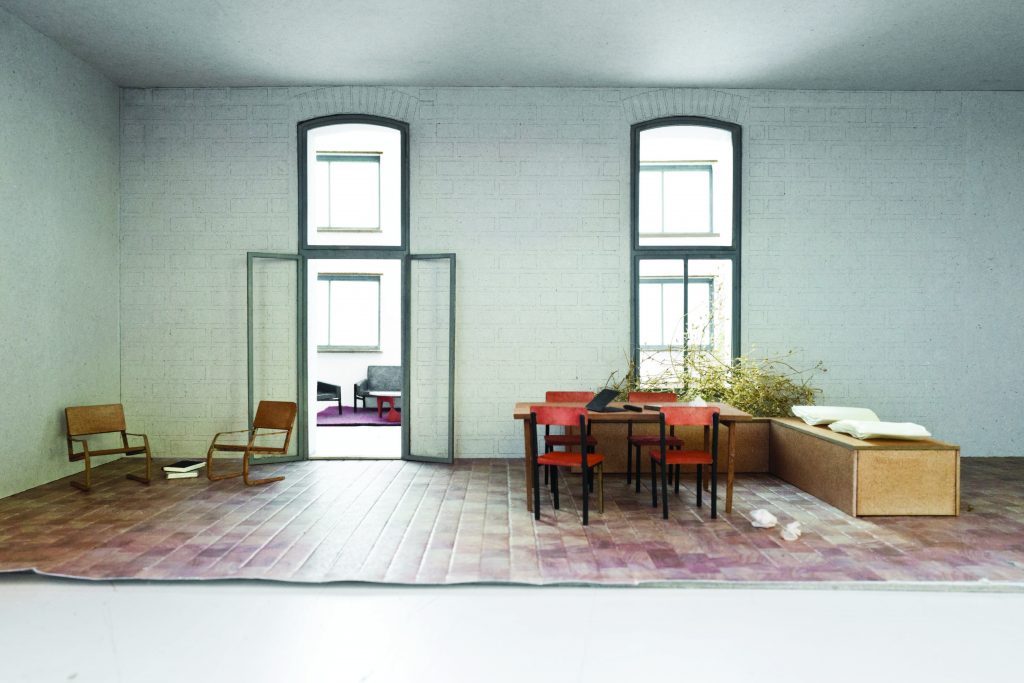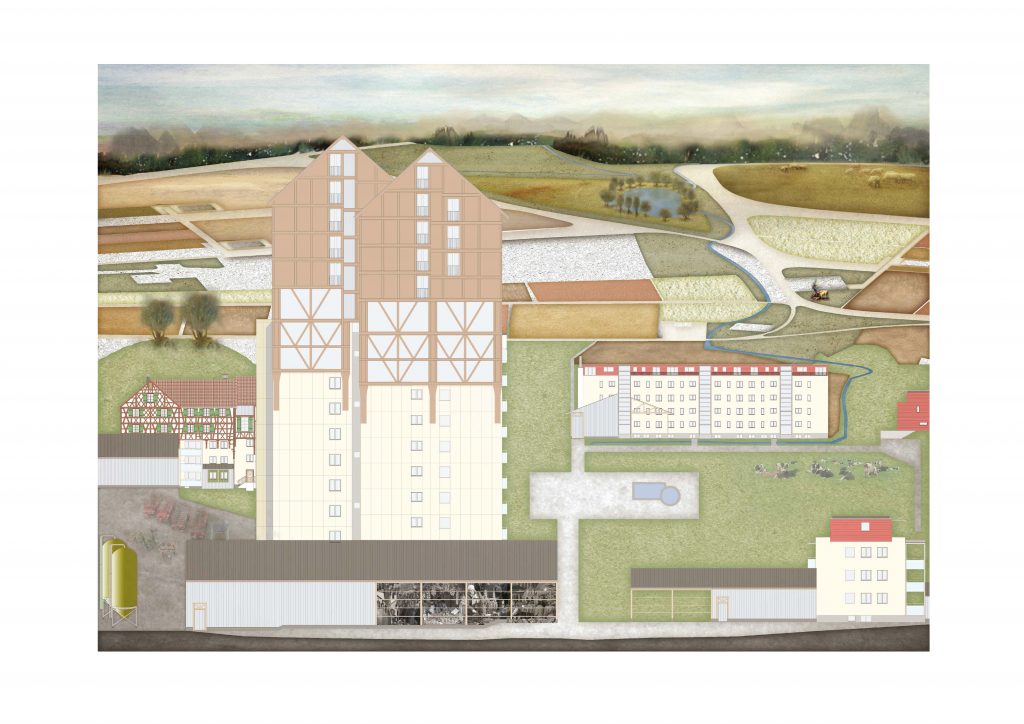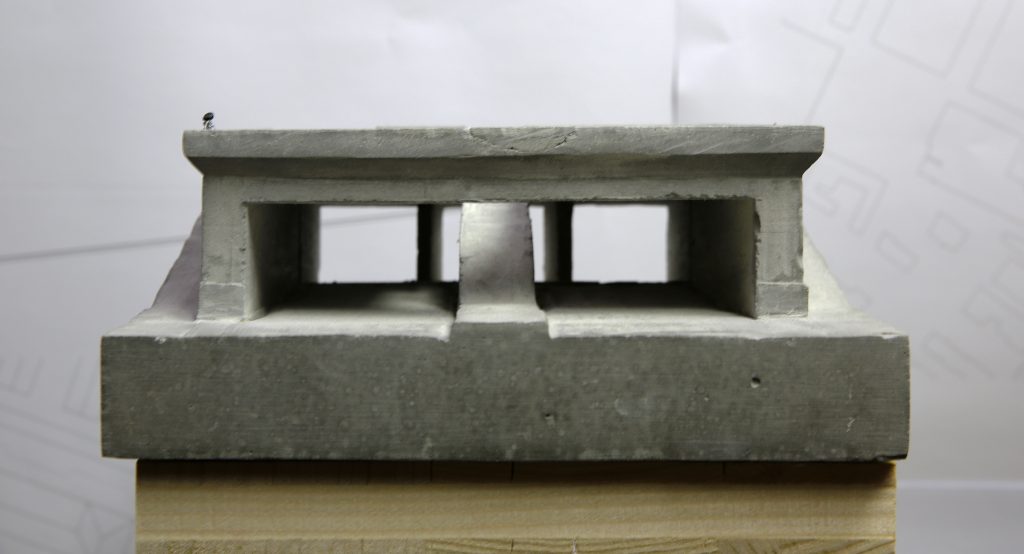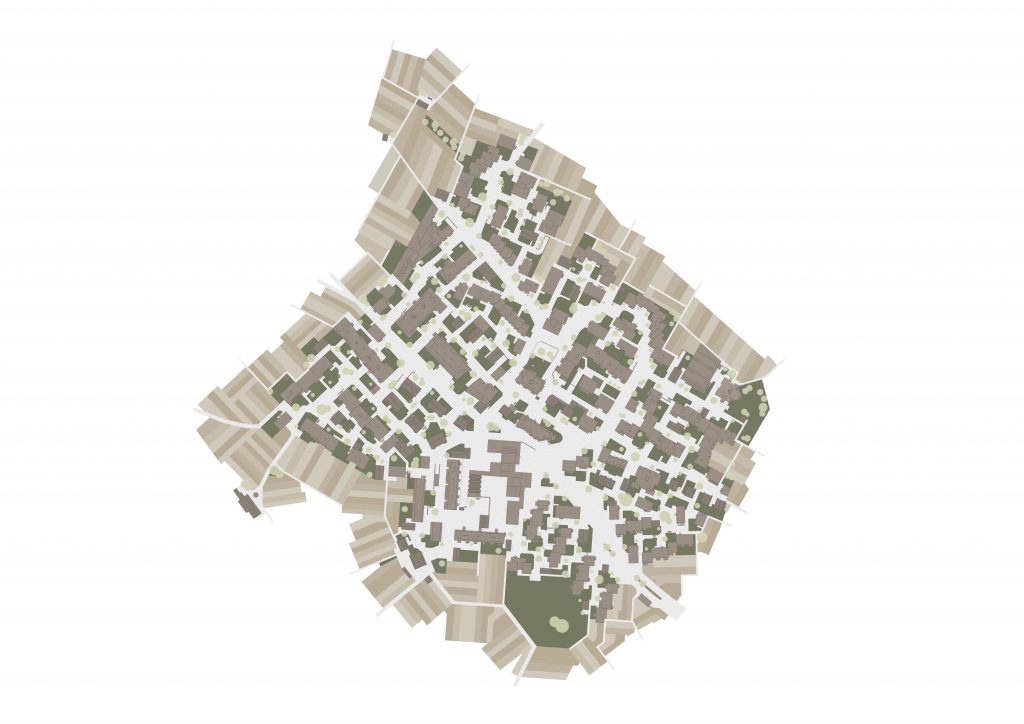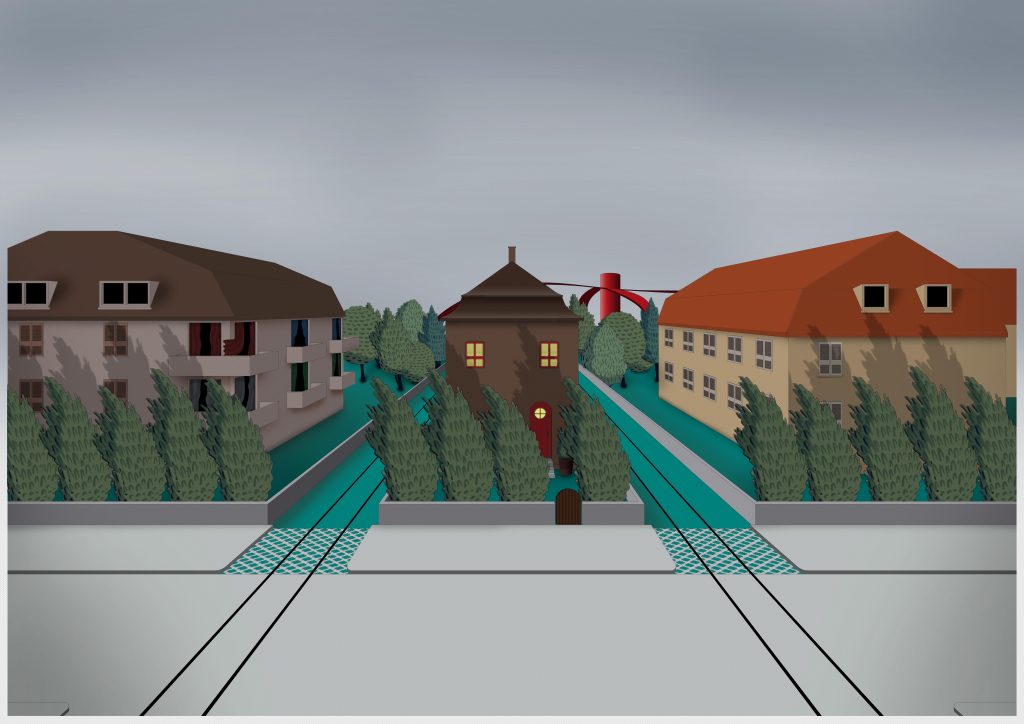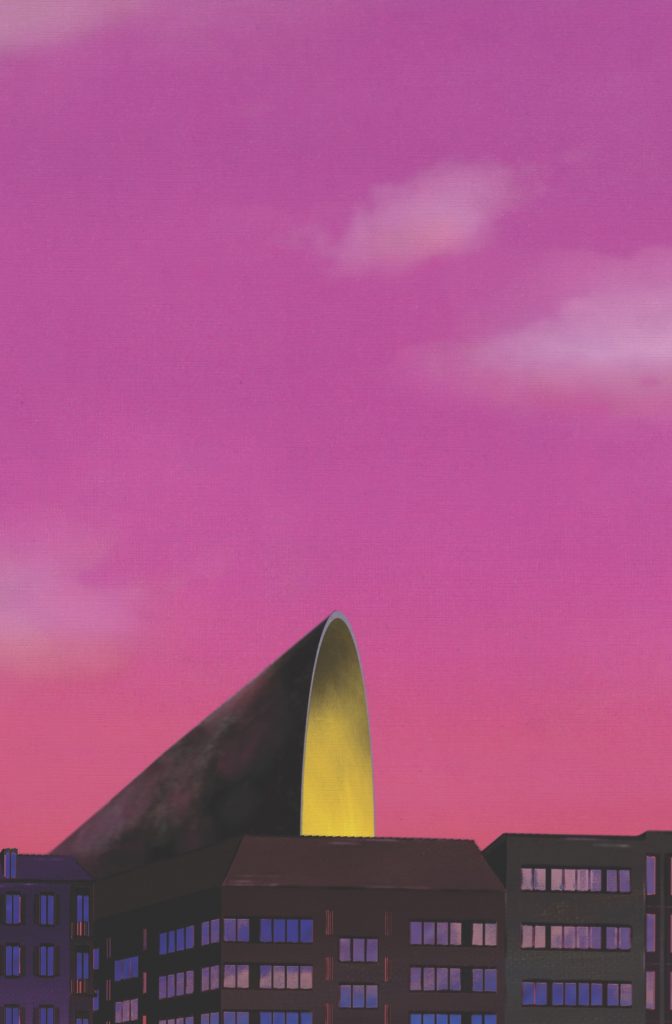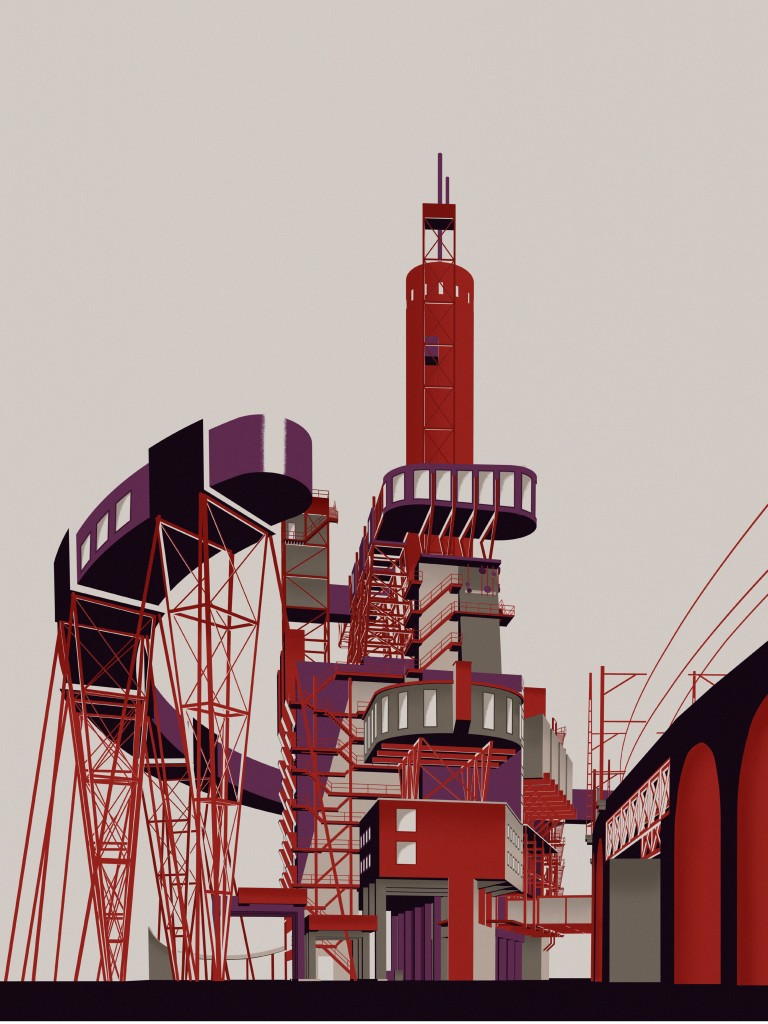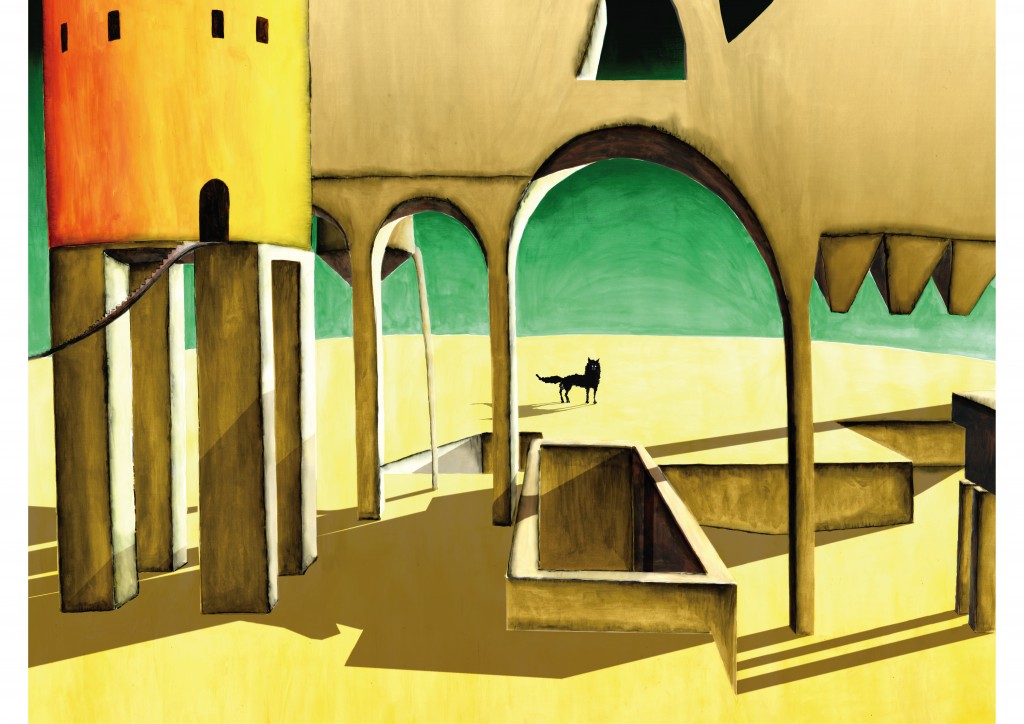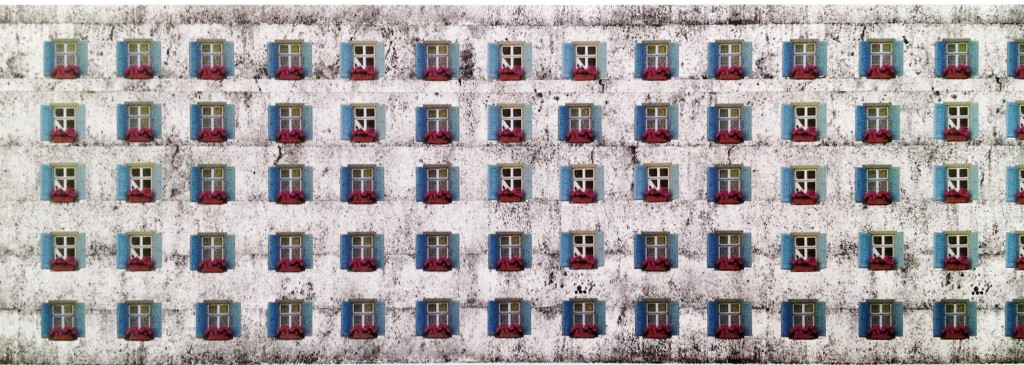The City Kraun
The City Crown Kraun
The City Crown: A futile ambition ?
As Bruno Taut observes in his book The City Crown, all ancient cities always had a building that was located on a higher point, visible for all people: “Throughout every great cultural epoch, the constructive will of the time was directed at one ulterior, metaphysical building”. According to Taut, “crowns” have disappeared from modern cities, since they lost this spiritual and physical goal that the inhabitant could reach. Thus, he wonders what kind of shapes and programs these buildings could bear in our time where religion is not the main actor of our social life anymore: “We have civic buildings: schools, baths, libraries, city administration buildings, etc.! And these edifices can certainly dominate! Still, for practical reasons, a number of these buildings, including the schools, baths and libraries […] lie scattered about our com- fortable city to disburse their healing effects. […] Moreover, [the city hall] probably contains the city council assembly room, meeting rooms and other [spaces]; but does this [type of structure] represent our view of life so that it may reign powerfully above the entire city?”.
Bruno Taut thus proposes two interesting paths to understand the city crown. Both the legitimacy of such a building and the notion of power that is inherent in the read- ing of it come into play. Maybe in an ironic attempt to criticise the notion of a crown, he proposes in his book a project of a city crown that looks like a enormous yet empty crystal.
The aforementioned publication was written in a time when the ETH building (G. Semper, 1886) was already overlooking the city of Zurich. The adjacent Univer- sity of Zurich (K. Moser, 1914) structure was still under construction. Some see this newly created ensemble as a concrete application of Bruno Taut’s ideas and visions. His new paradigm had a very concrete impact on the renovation of the Semper building (G. Gull, 1914) as well as on the design of the University’s dome.
In 1953, Max Frisch, in a proposal for a competition in the University neighbour- hood, designed a 15 storey tower that would have been a widely visible sign for the city. Nevertheless, his project was put aside by the jury at the very beginning of the consultations. They noted that a new building must be “in balance with the Universi- ty” and should “not affect the dominant effect of the collegiate building”.
Incidentally, this 2018 diploma finds its way back to the 1953 competition; both proj- ects share the same site. Further, this antecendant project raises a contradiction inherent in the very title of this diploma: “STADTKRONE – Haus der Geisteswissen- schaften am Schanzenberg Zürich”. Indeed, if the wish to have a new City Crown for the Schanzenberg was that strong, the project of the tower dominating the city would have been accepted. This makes explicit the connotation that this concept still has on this ensemble, namely an empty idea, a word whose meaning refers rather to its history and its use in a specific context (in our case the architectural uni- versity) than what it really represents. The concept of a City Crown refers only to a nostalgic and empty idea and not at all to any reality that still bears meaning for our society. Arguably, the Prime Tower is the dominating force in Zurich, visually and programmatically.
The Subversive Copy
The aim of my proposal is to refuse the notion of a building that ideologically towers over a city. The intention is to design a structure that both questions and engages with the original idea of a city crown. The ambition is to awaken an astonishment in the spectators, concepts that seem to be self-evident are deconstructed.
The project endeavours to propose a subversive copy of its two neighbours. It iden- tifies elements of power hidden in the mass of the existing buildings (the dome, a colonnade, a facade, a base, a lantern, a profile, a yard etc.) and detaches them from their original context. These elements constitutive of the image of the City Crown are re-placed and take on new meanings; once detached, they can be rein- terpreted, not as signs, but as autonomous figures. They are deployed as theatrical elements or as characters in a scene which is inhabited by the researchers.
The project can either be understood in conjunction with its two neighbors buildings, or through the immediate experience with individual elements. For instance, the profile of the University’s roof is experienced along a stairway. Somewhere else, the public ramp lands on a square created by the University’s tower and the ETH’s facade together. All those parts are organised and combined using the idea of a loose, meandering ‘promenade’ rather than a strict geometry like their counterparts. Each liberated institutional elements extracted from the neighboring buildings now houses one part of the “Raumprogramm”.
In the project, one can find public spaces, a library, auditoriums, laboratories and studying spaces for the students and researchers. Each of these parts are indepen- dent and expressed differently, yet they are brought together in the first three floors where different uses can be found like a cafeteria, a gym or a café. In the center of the complex, a generous courtyard takes on the role of a connection point of all paths going through the building. A public passage is crossing the entire complex, which completes the “Hochschule Promenade” and offers scenic views on the different elements. This passage allows an access to the newly formed plazas and ties everything together again.
